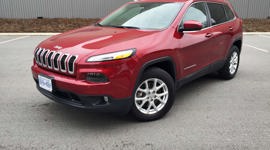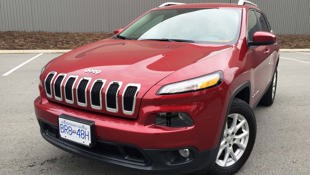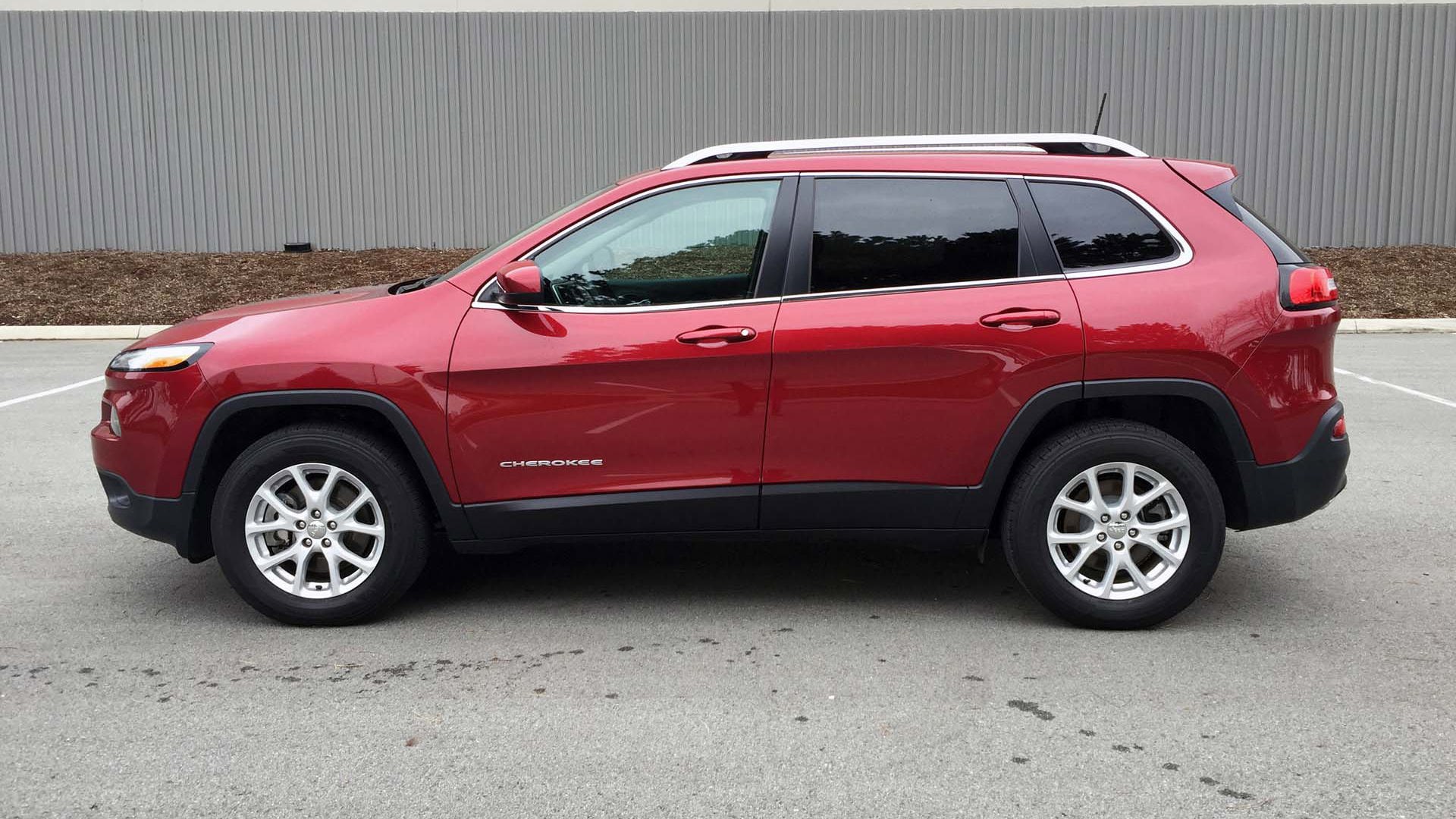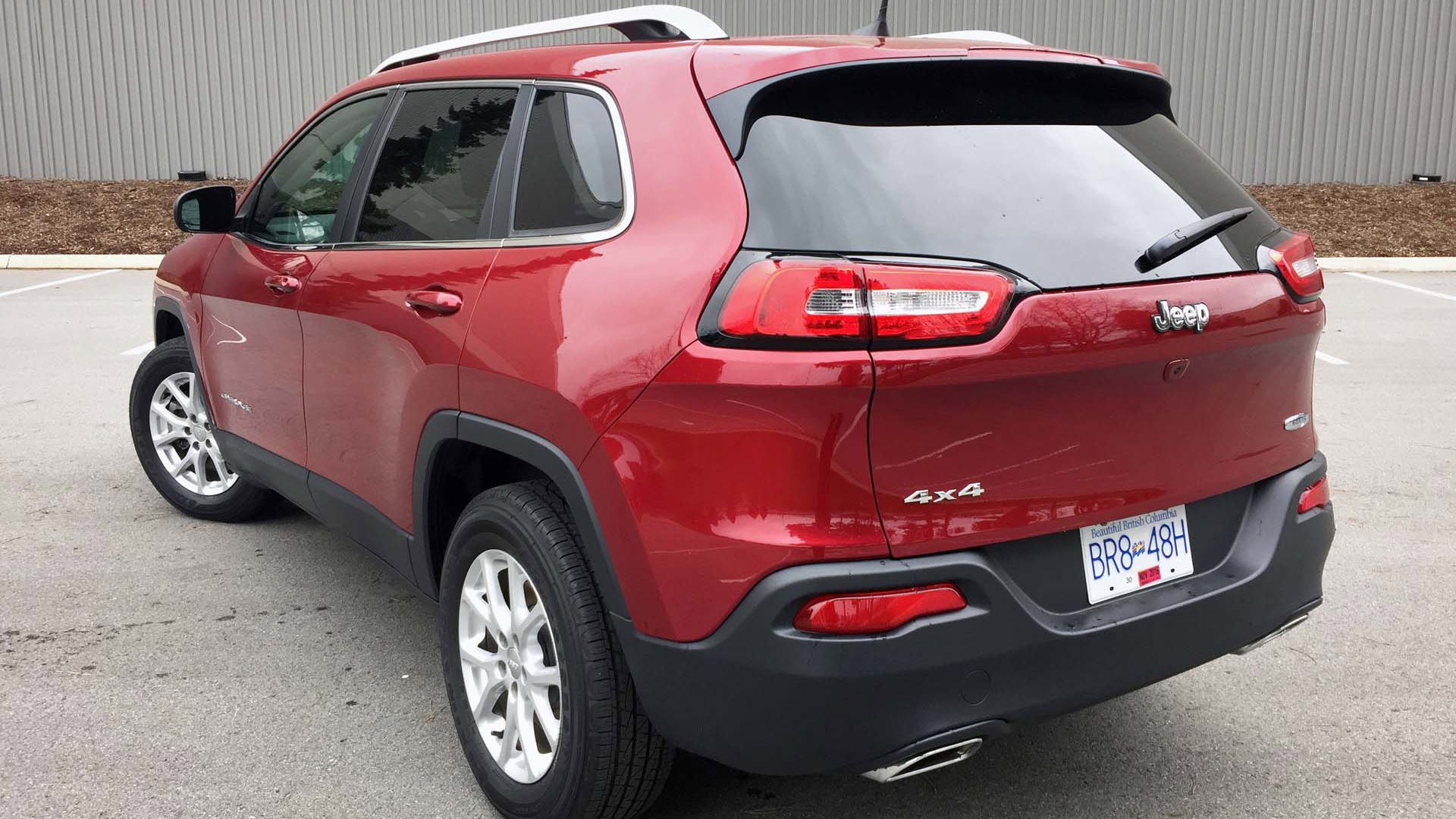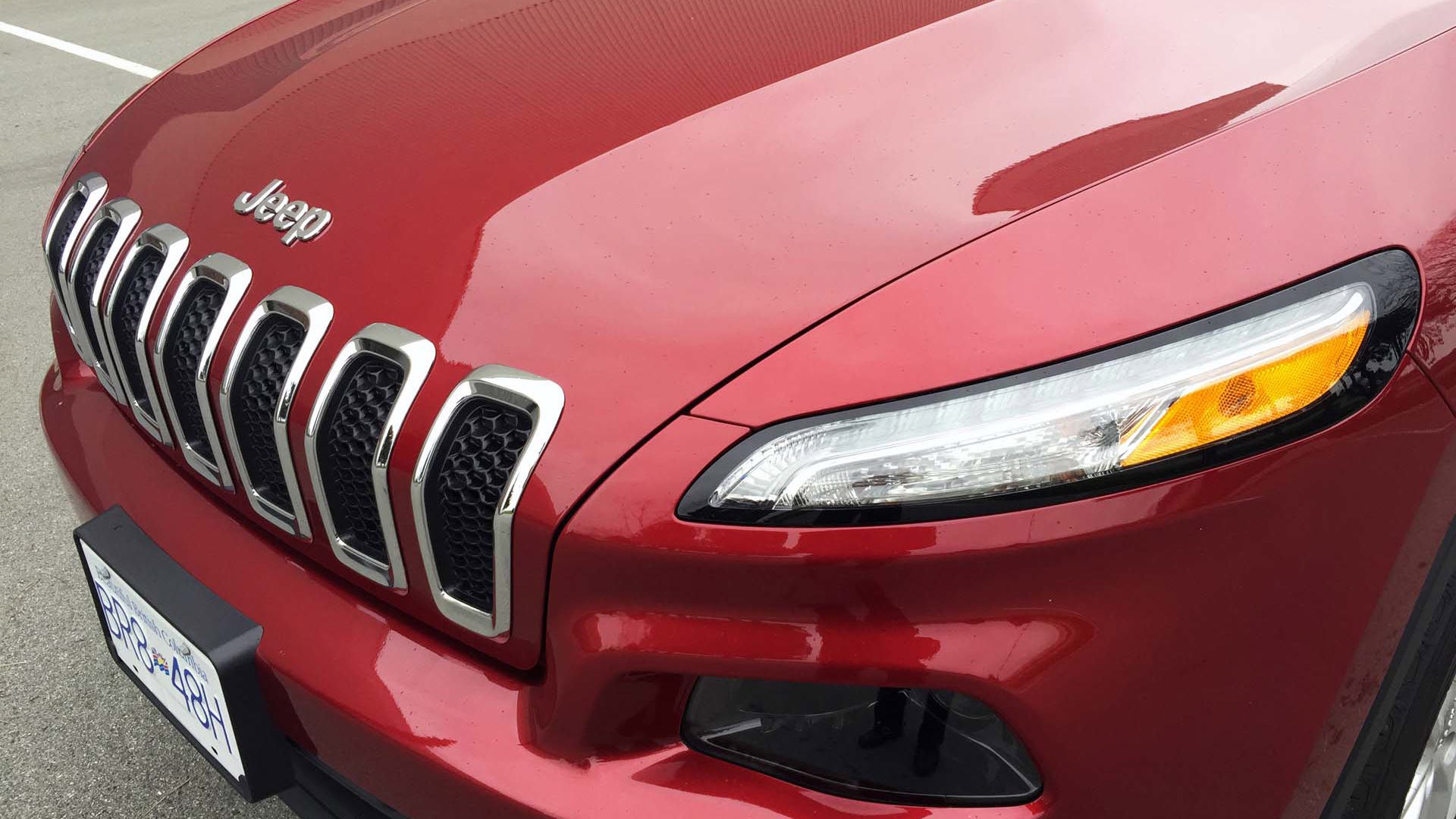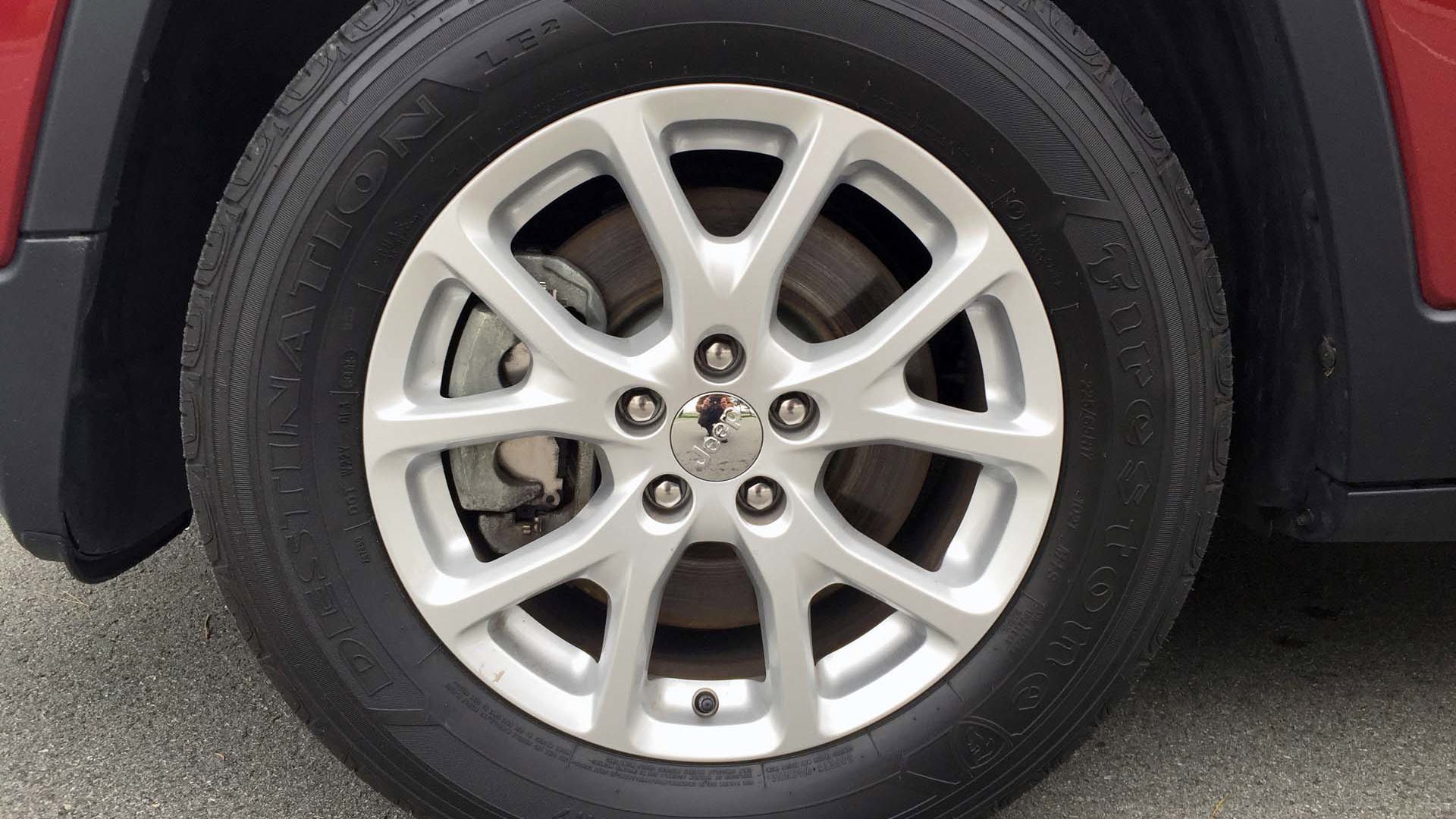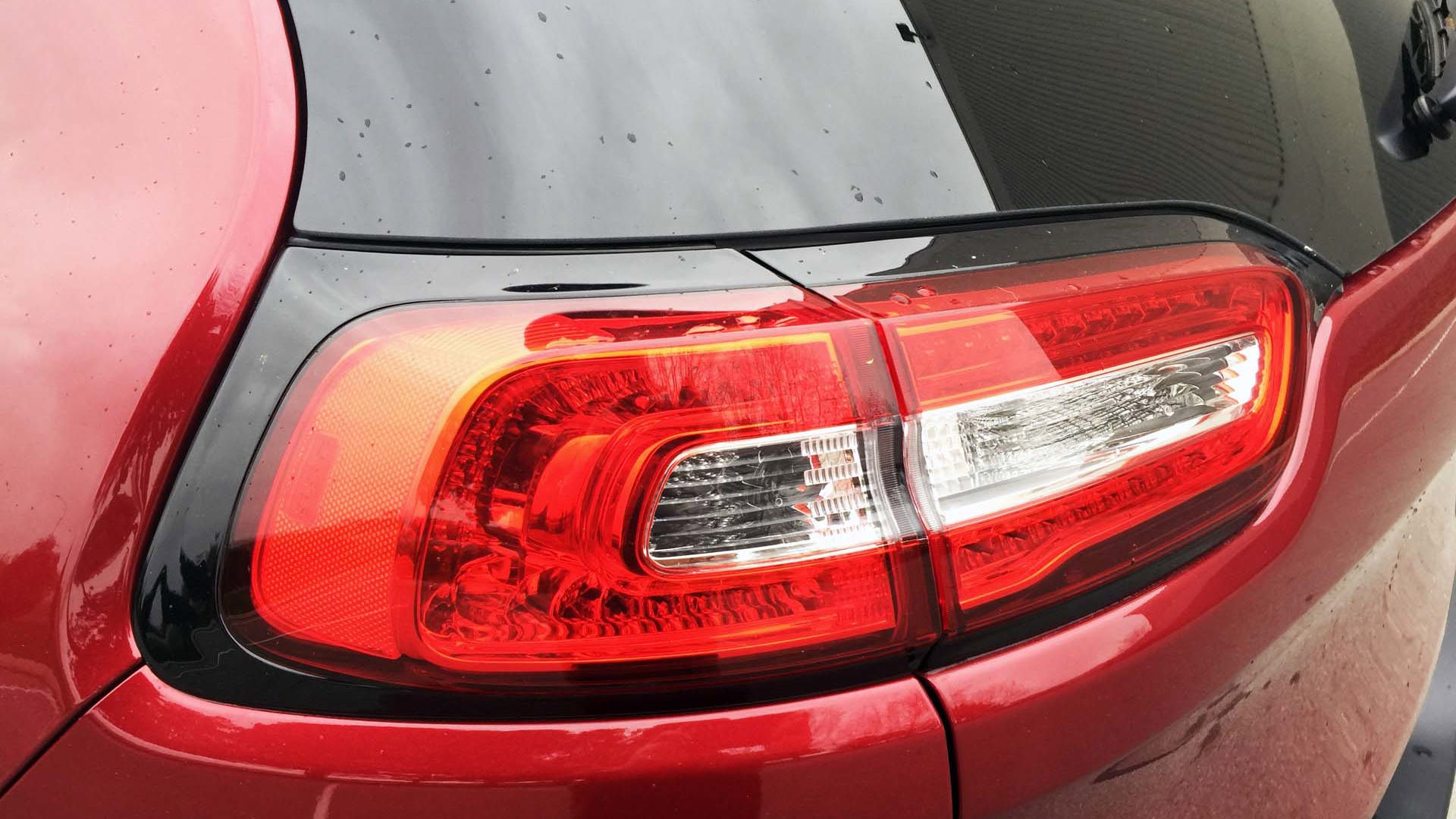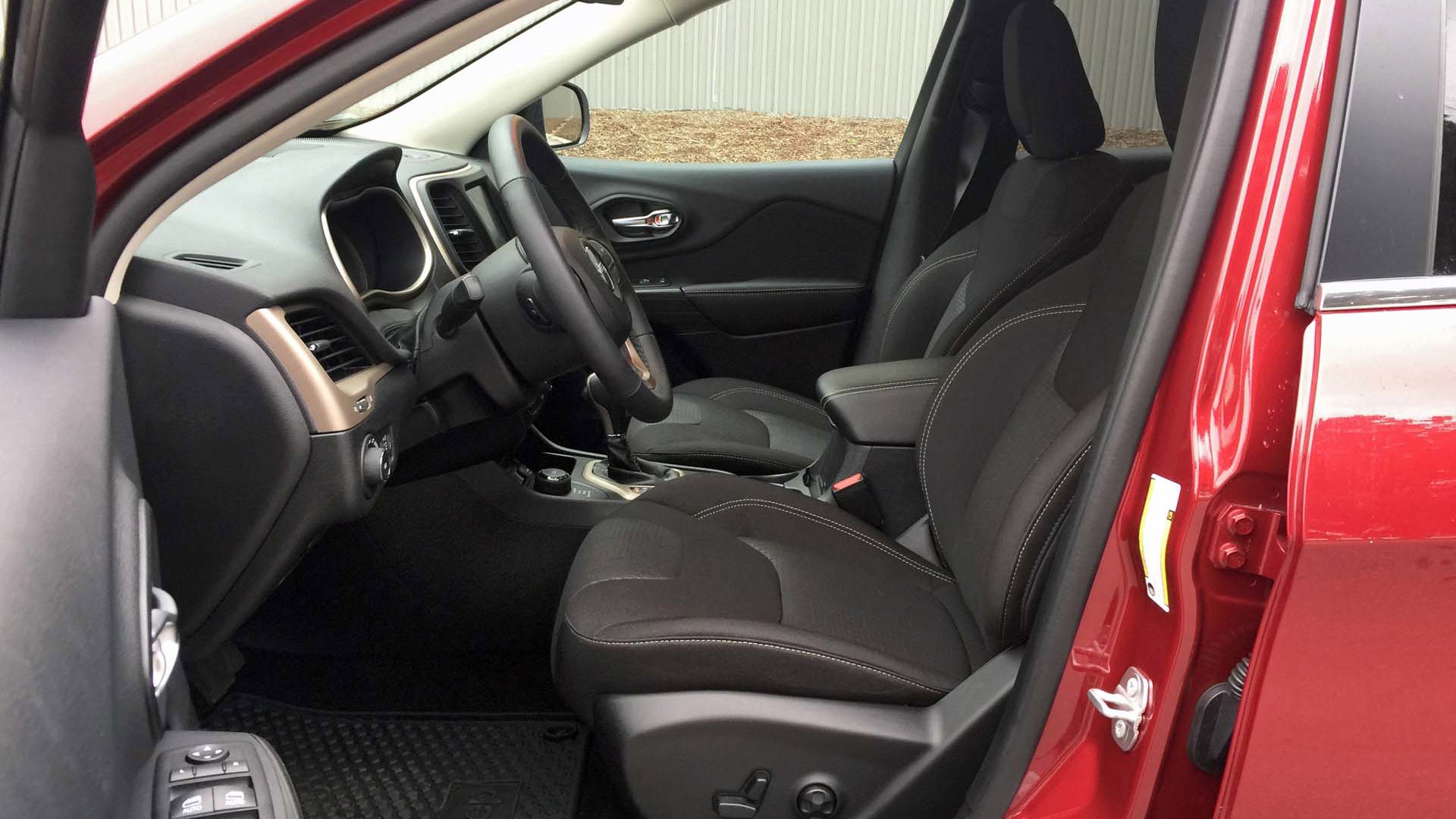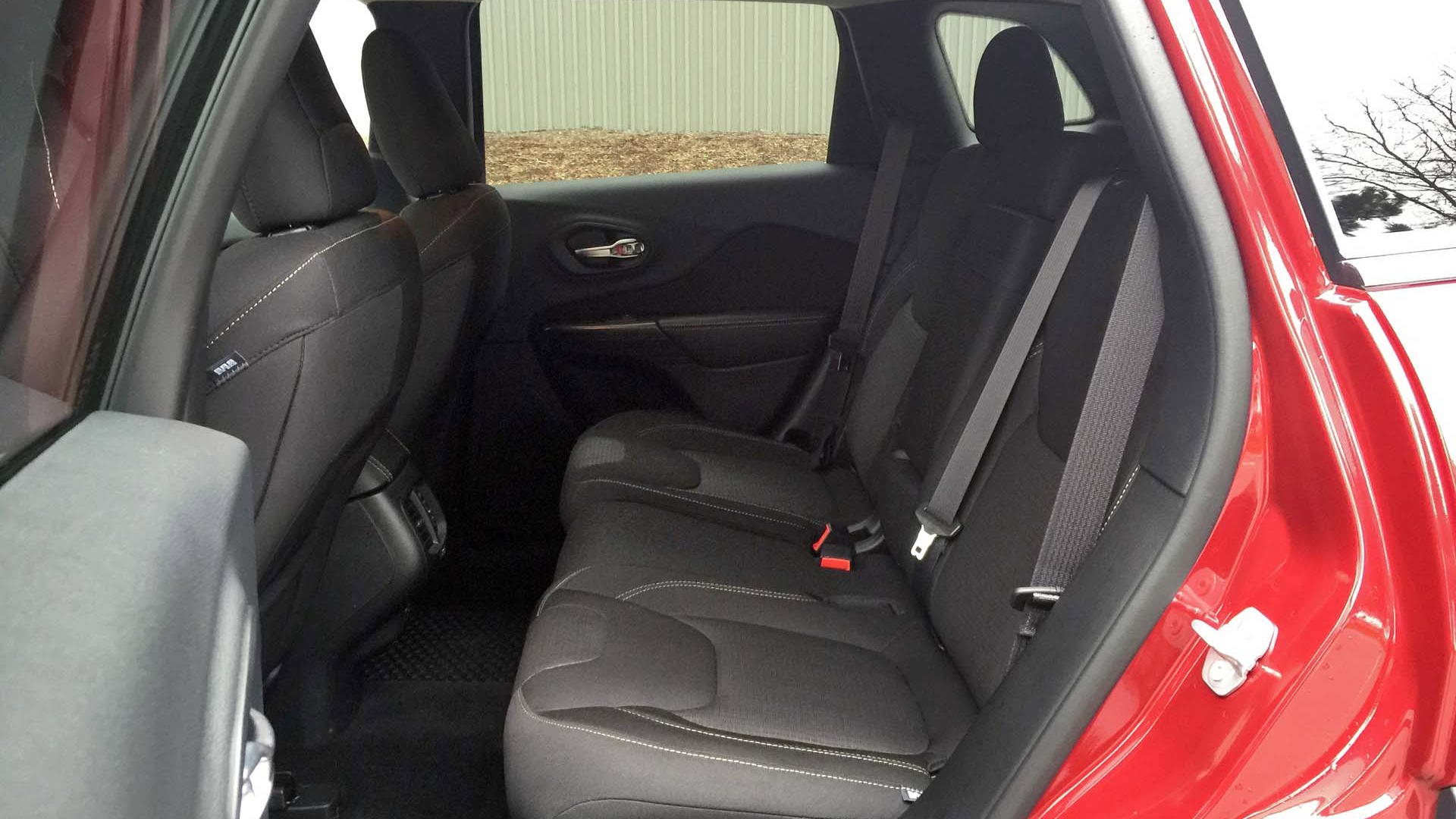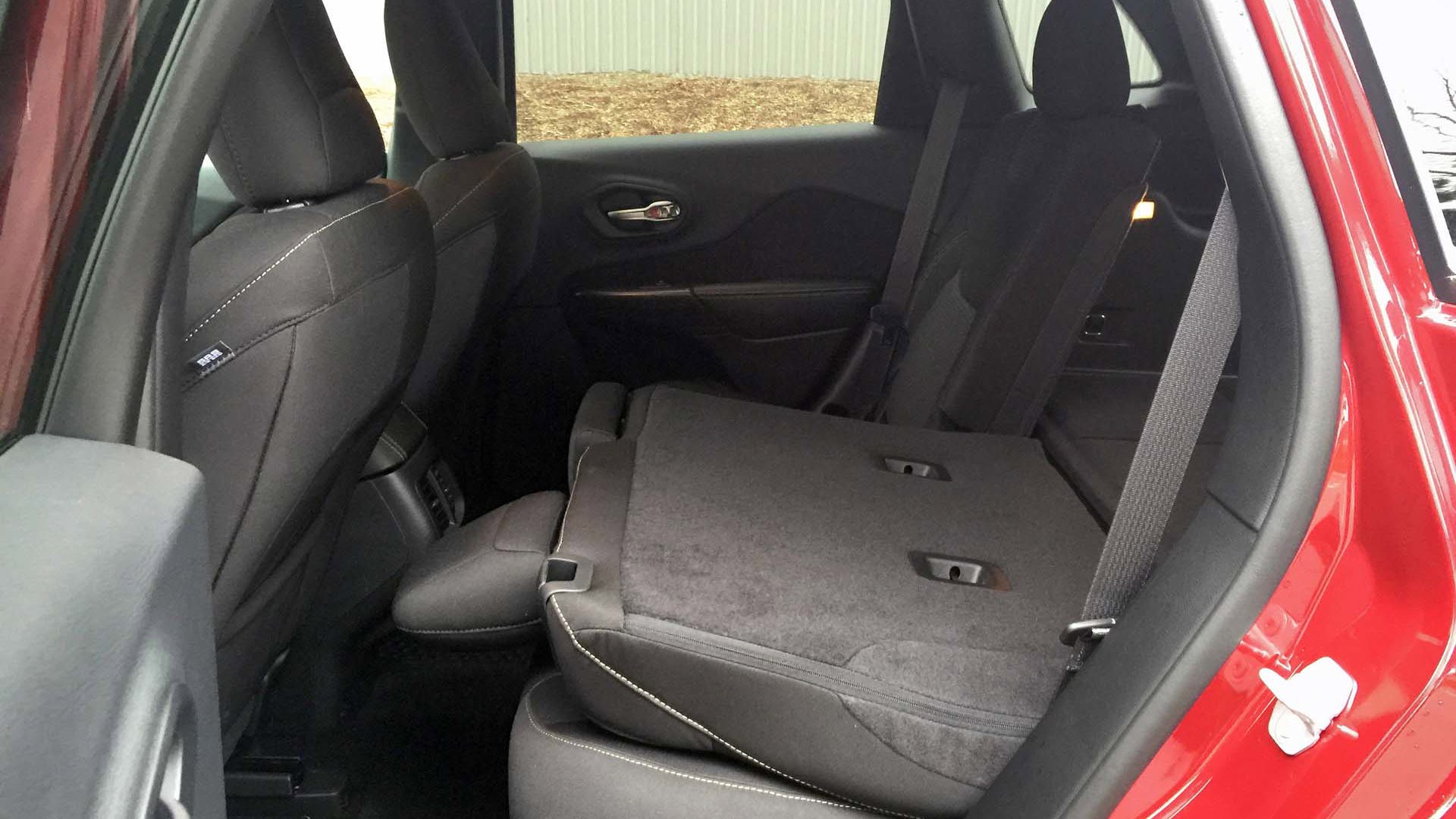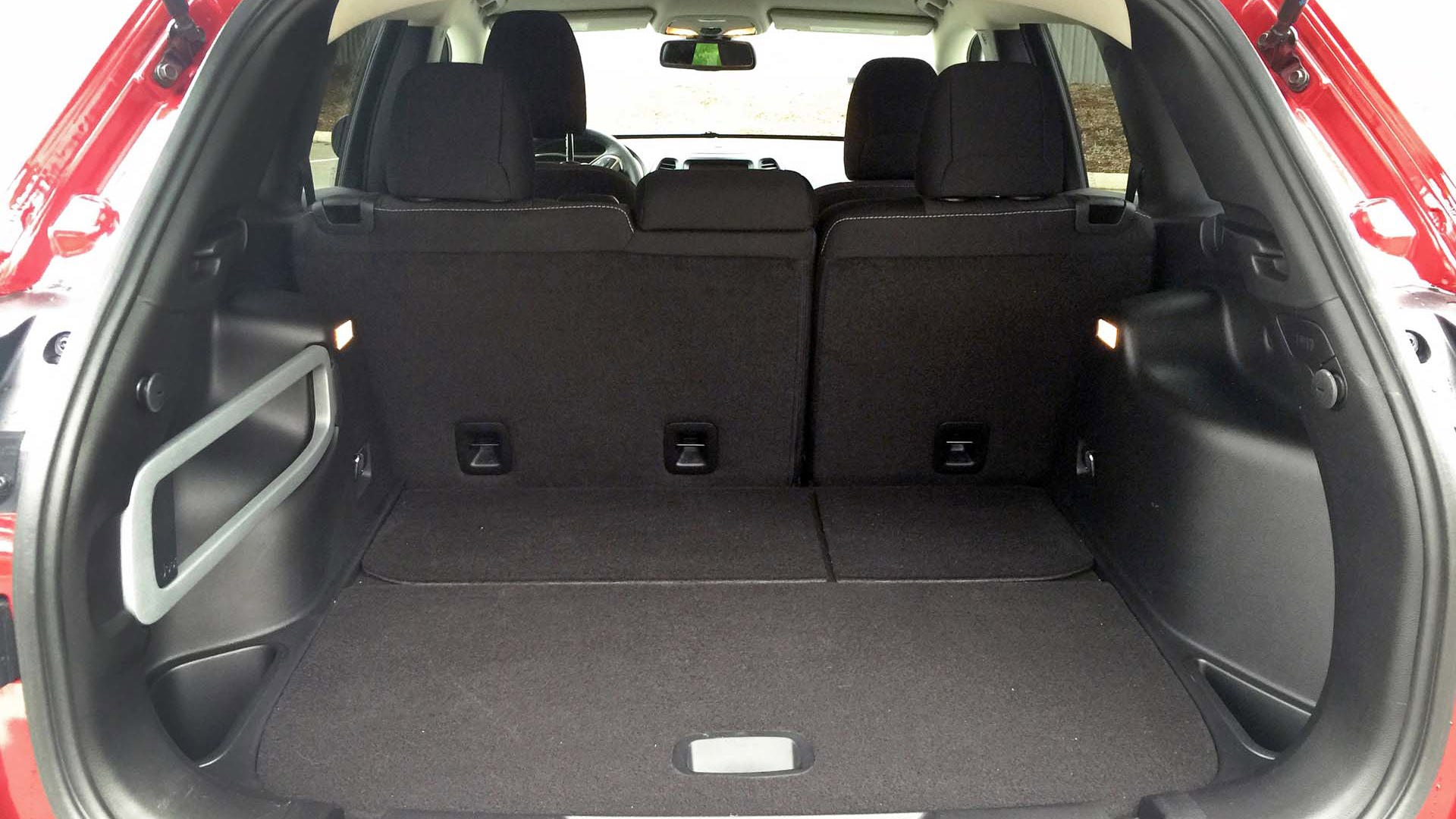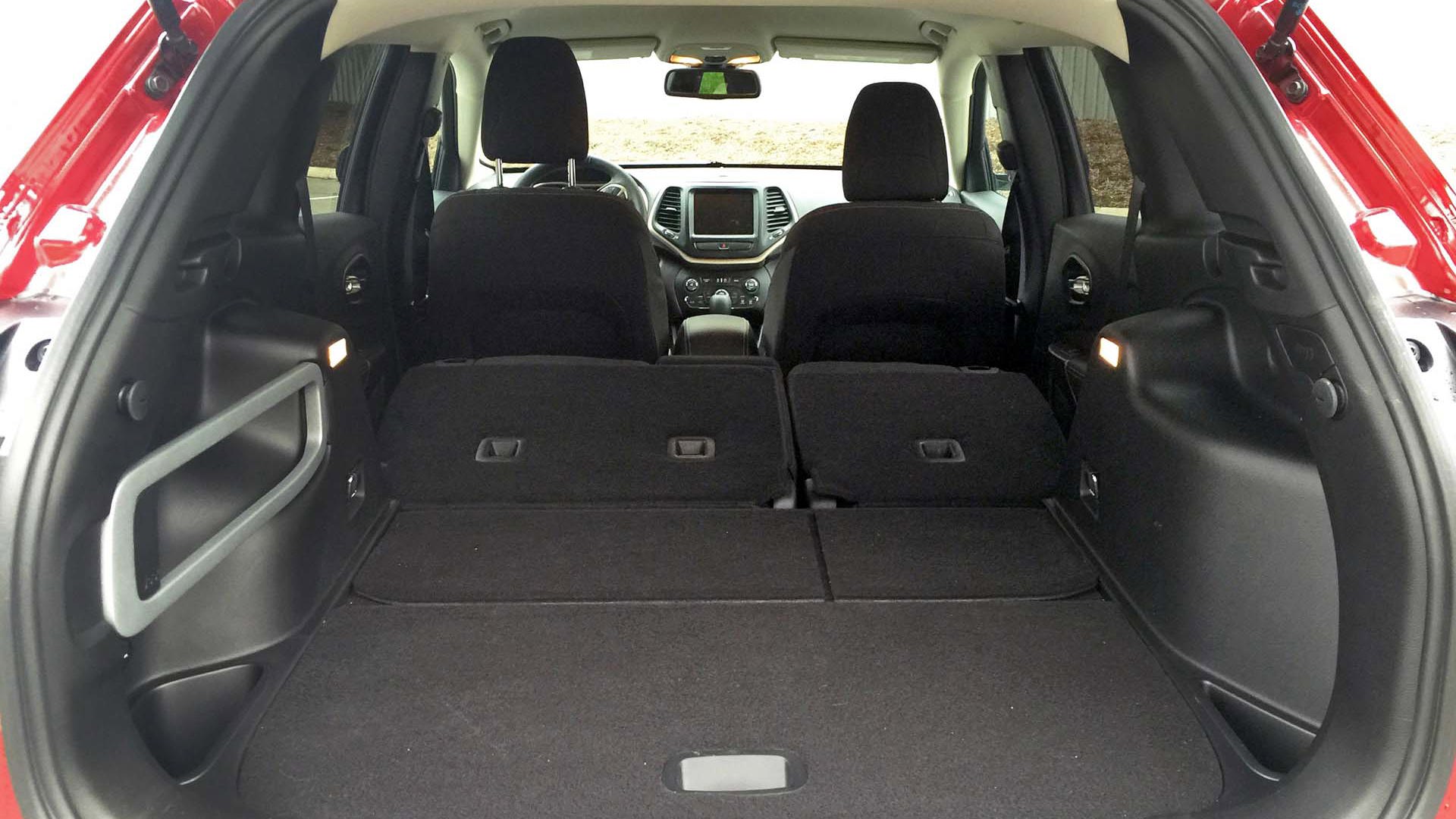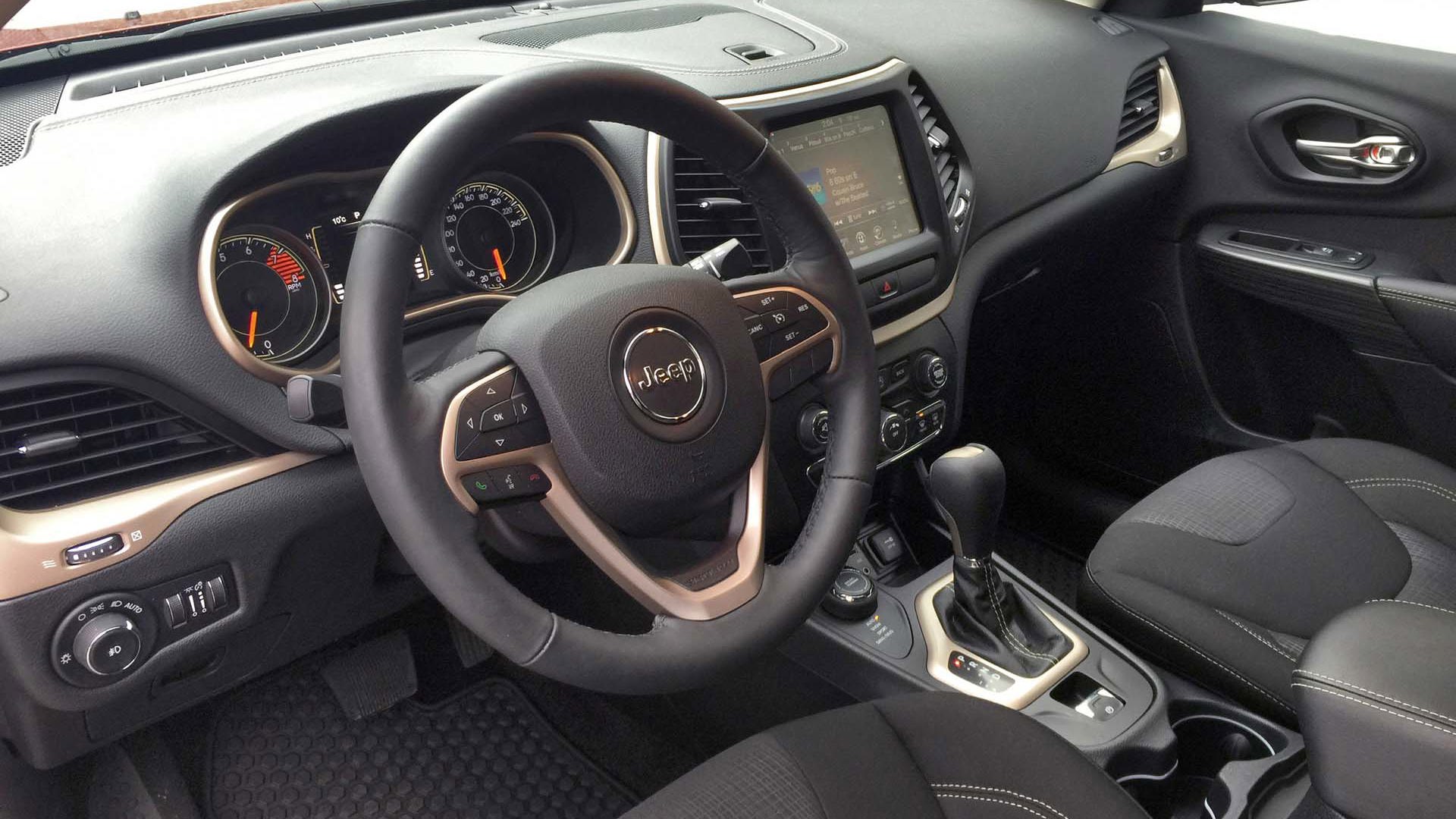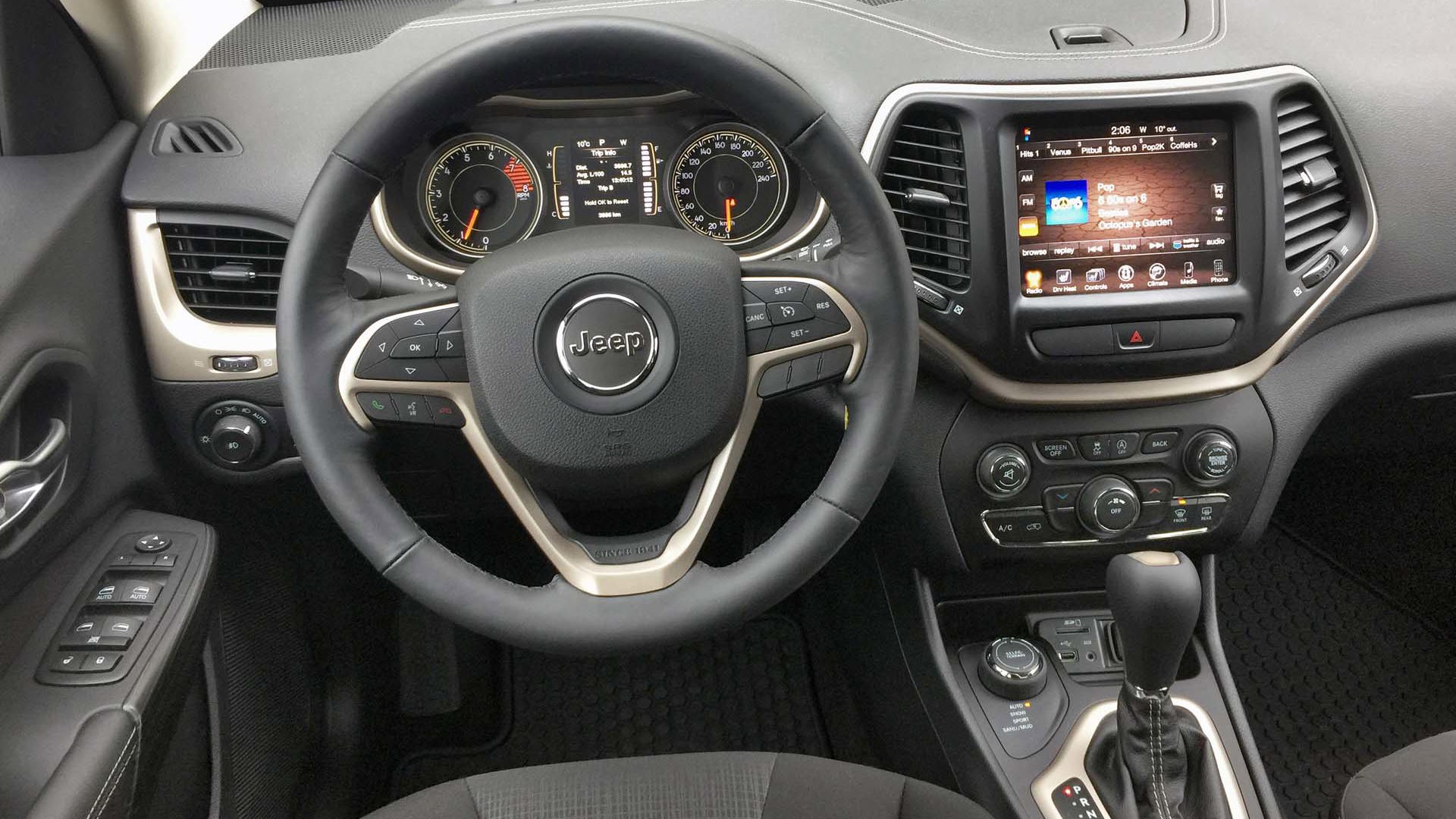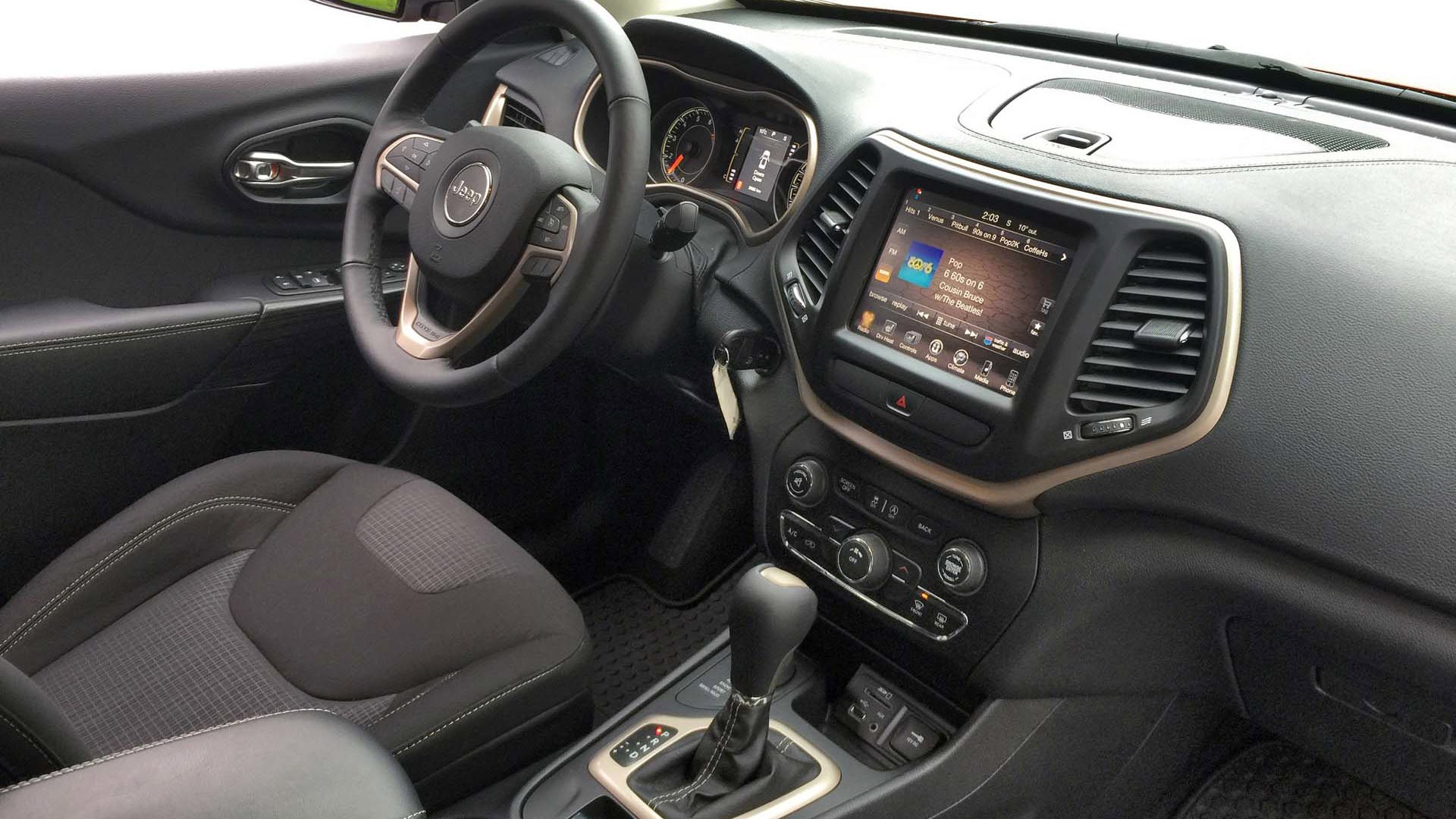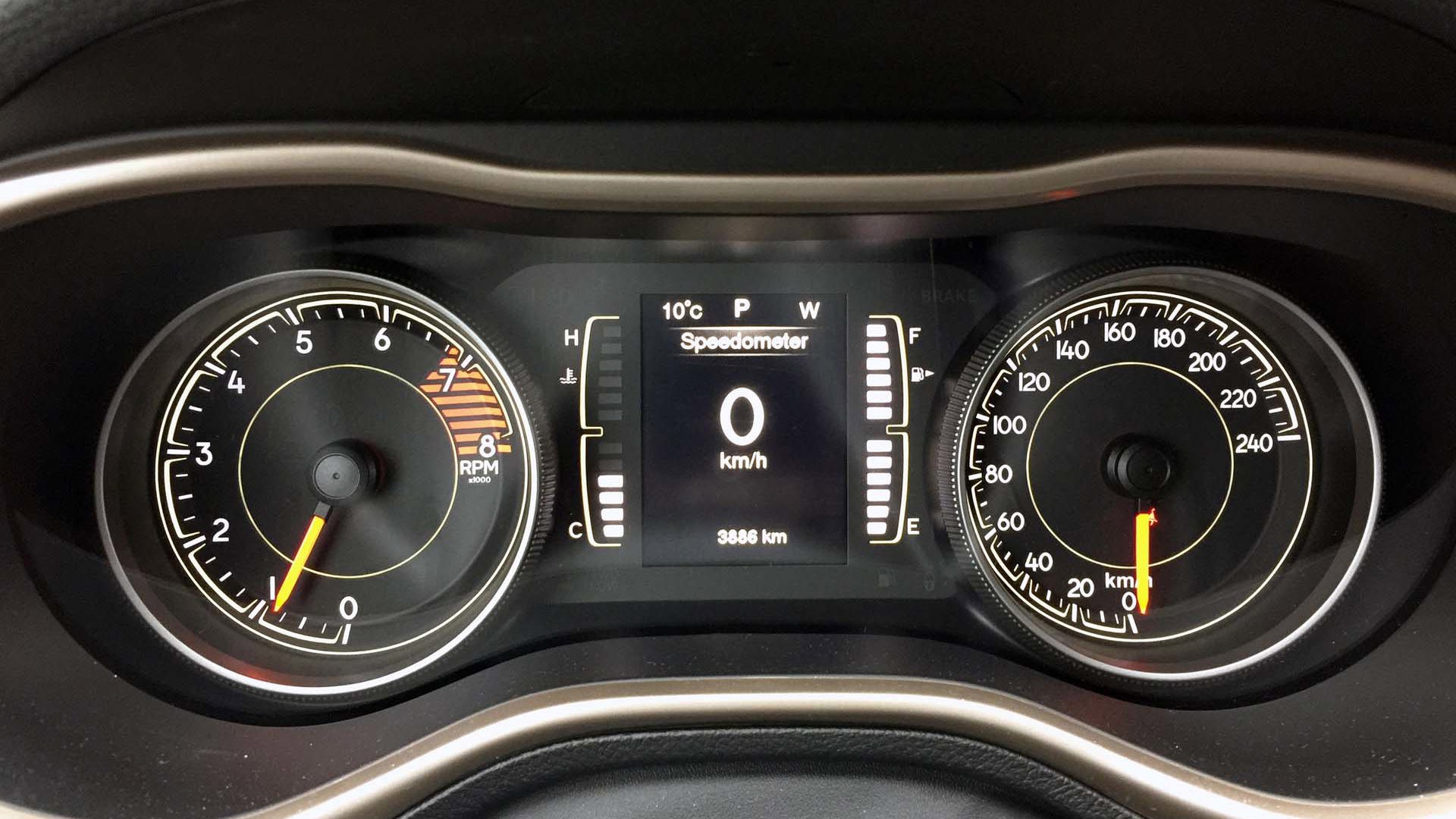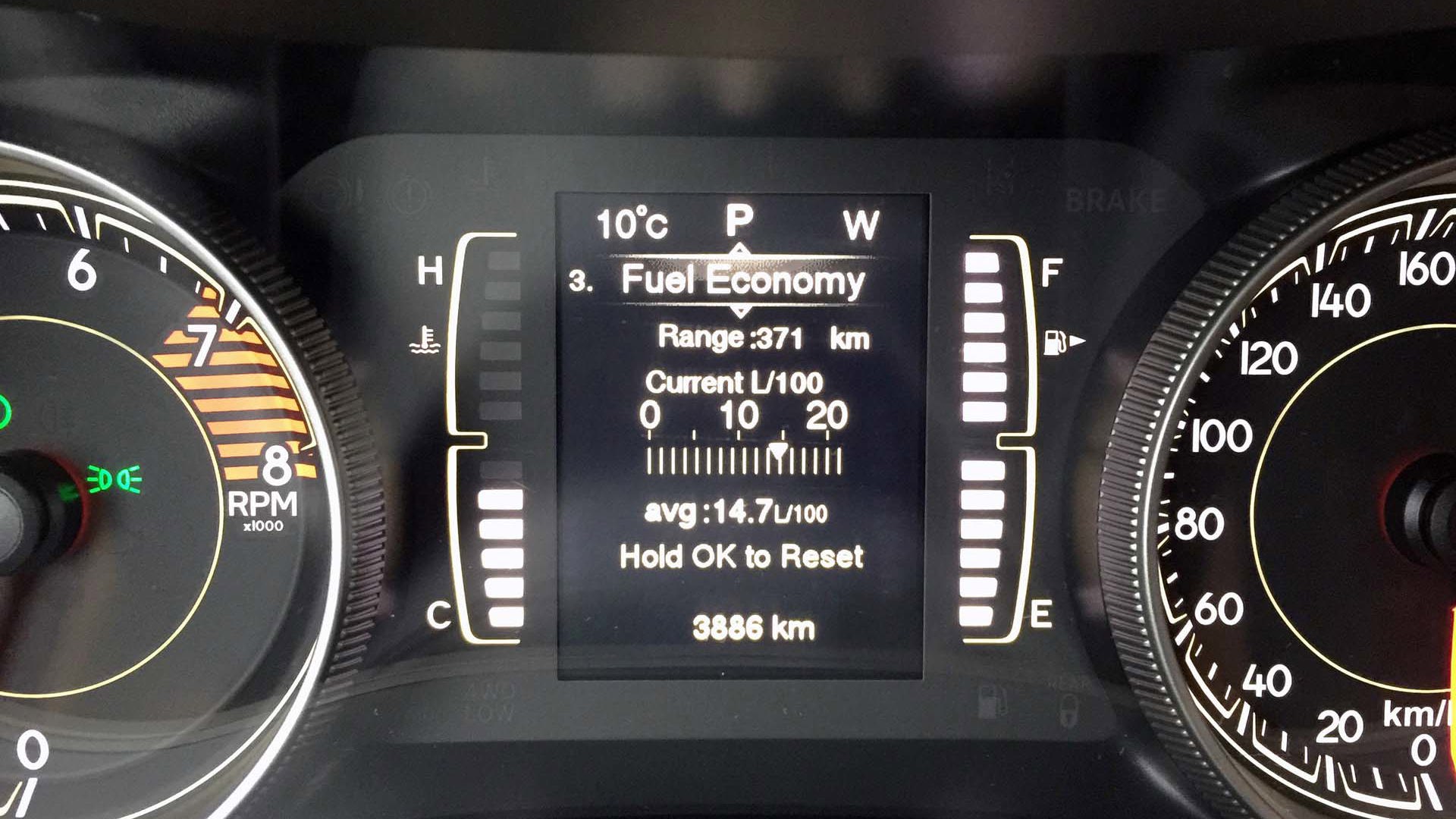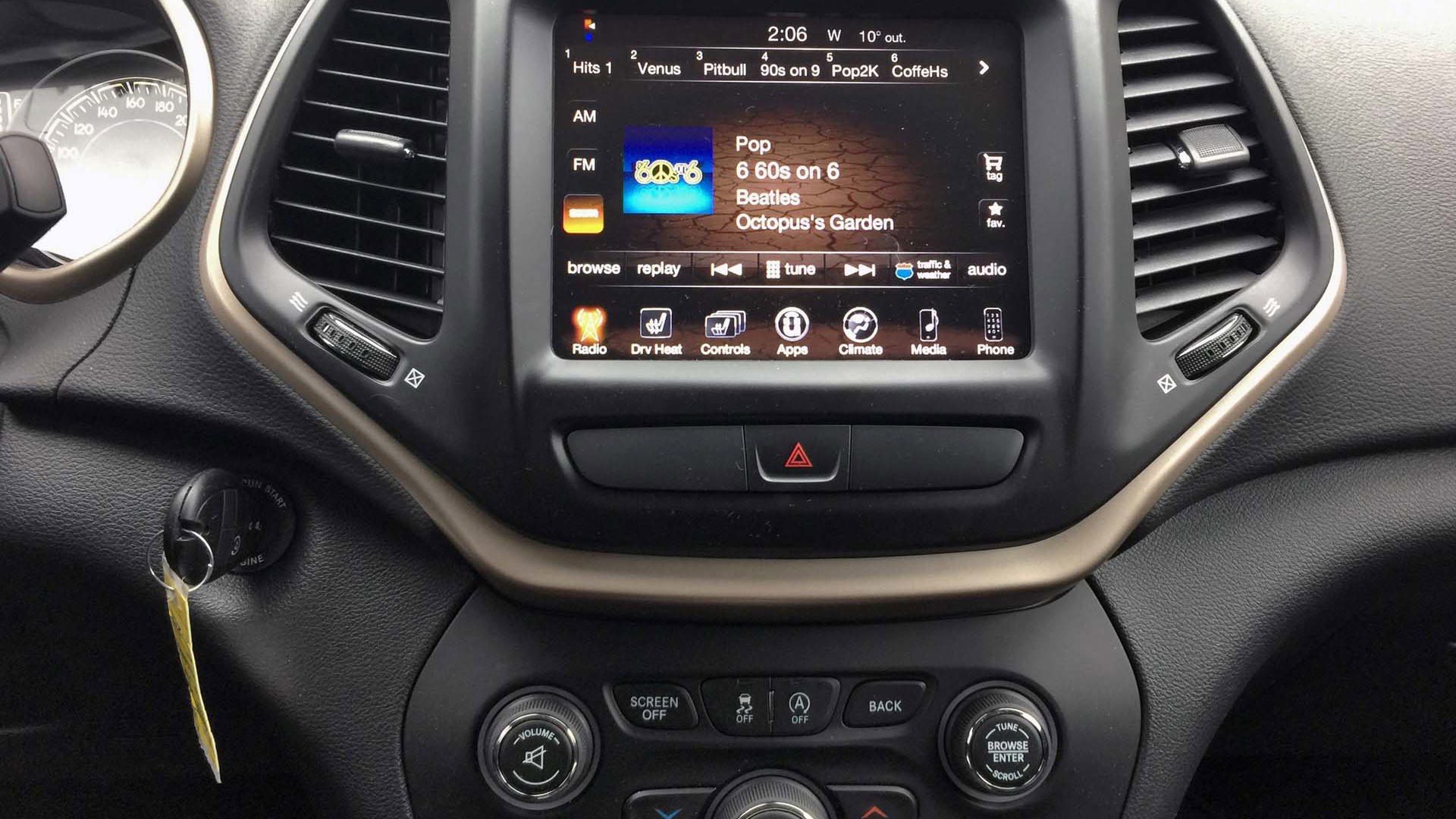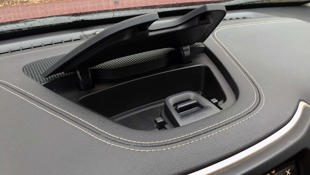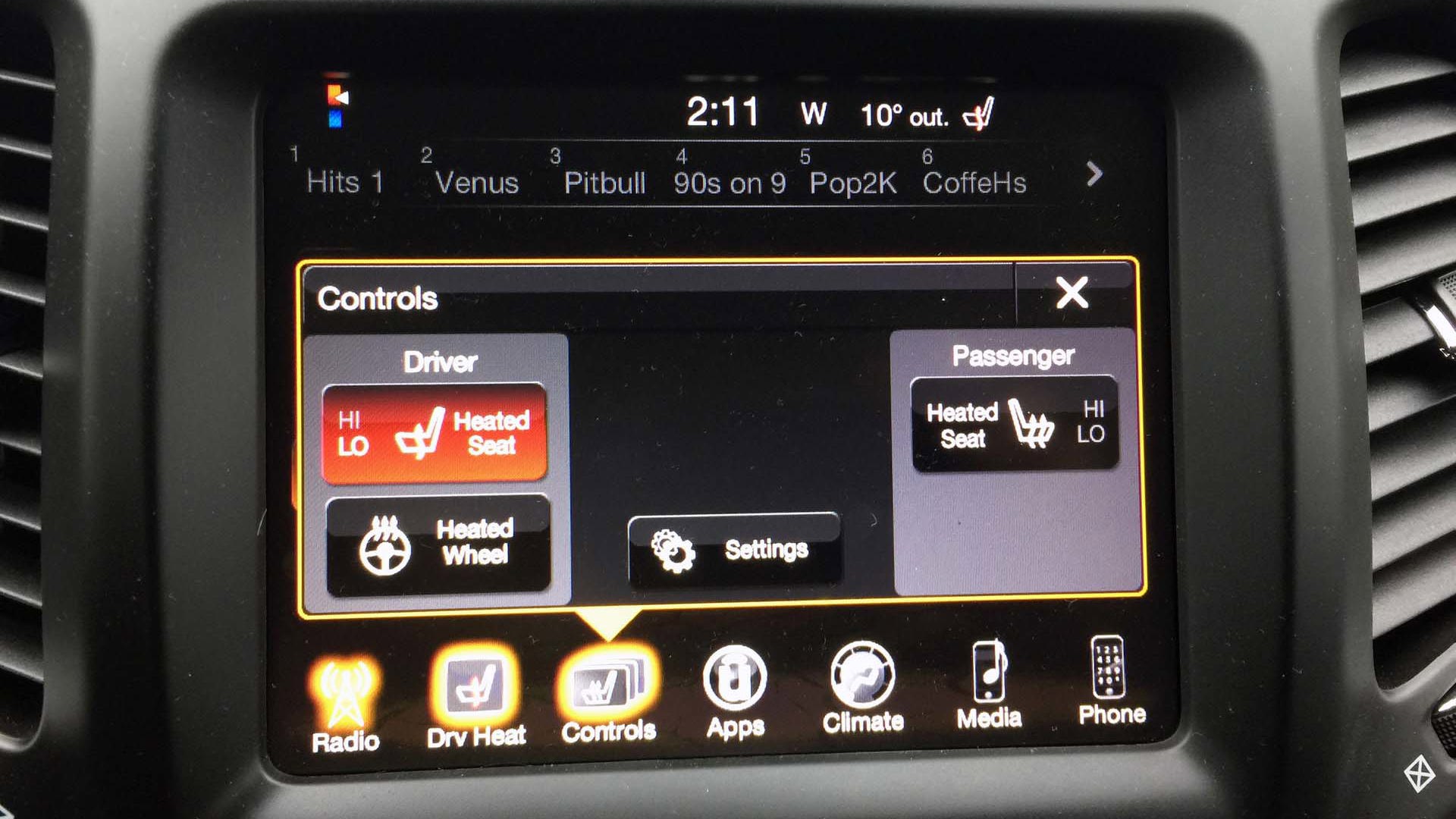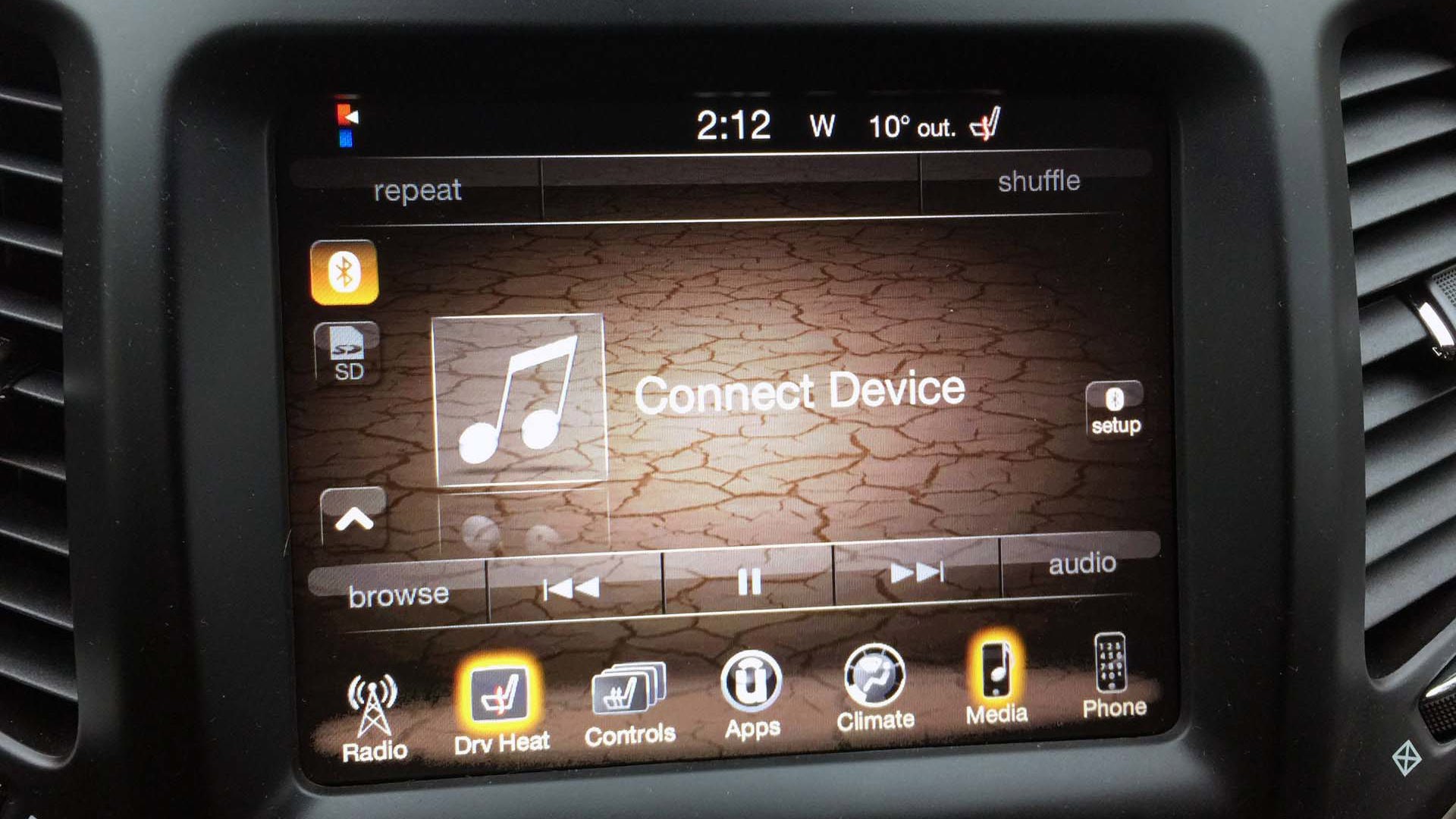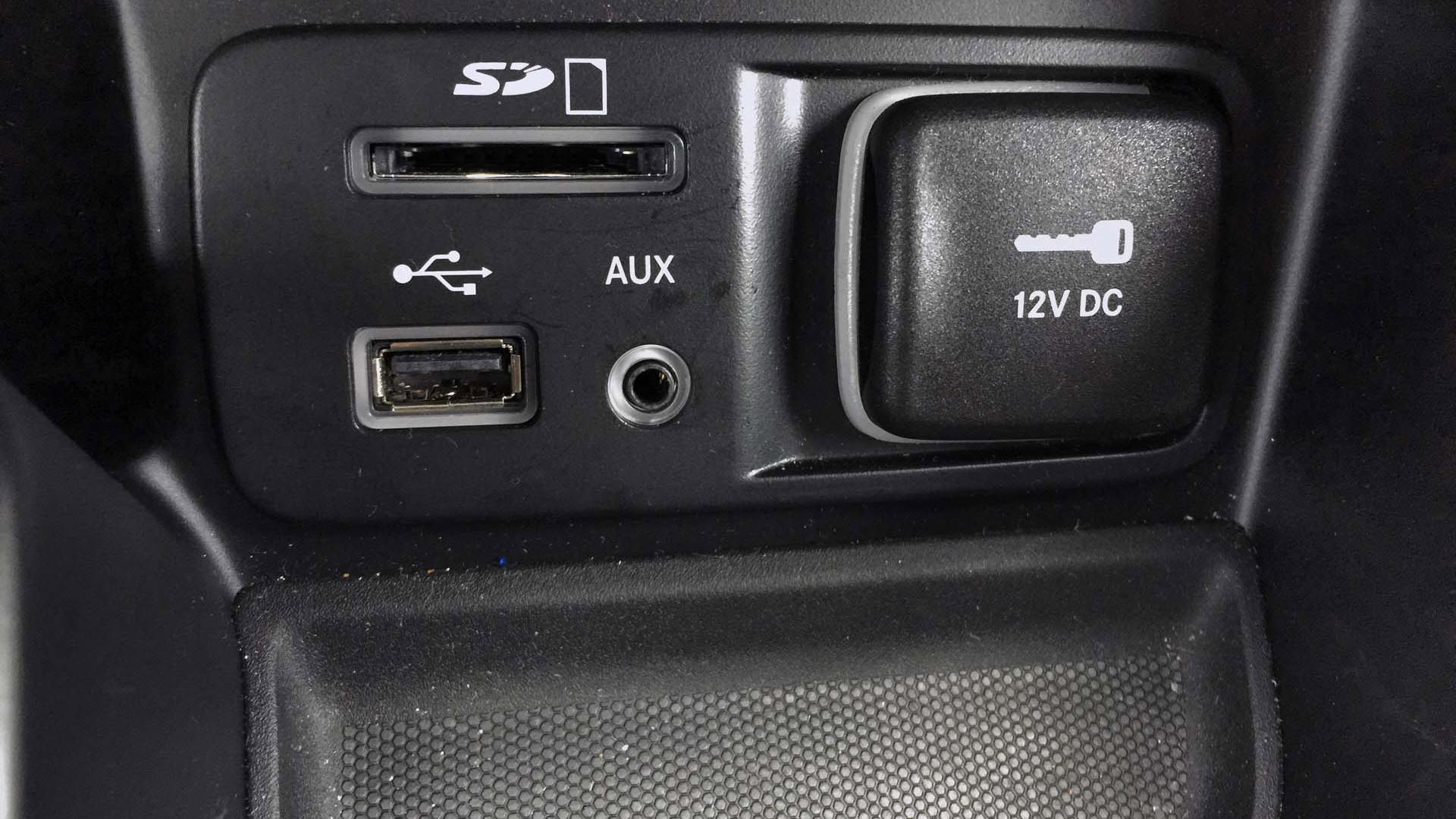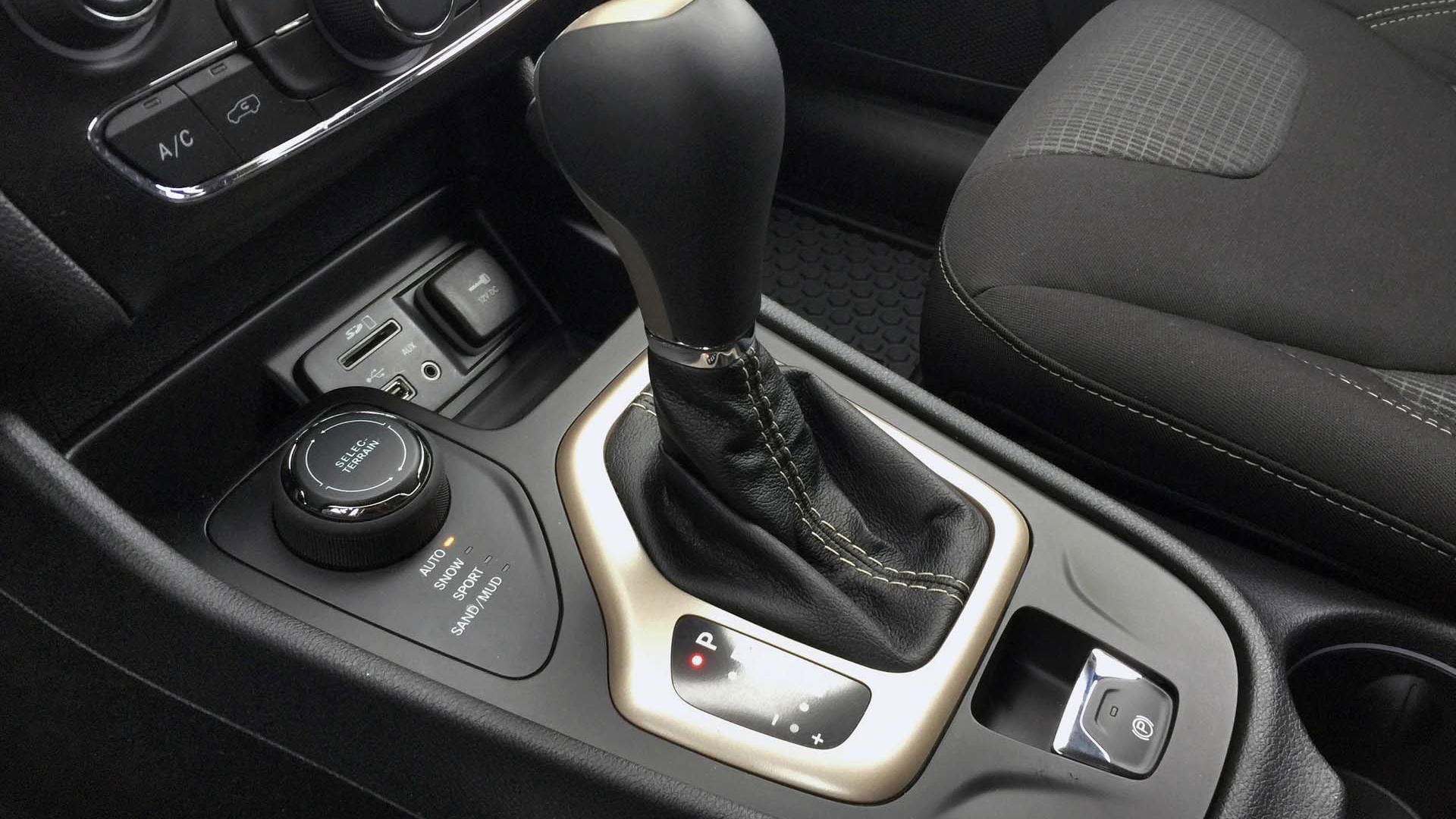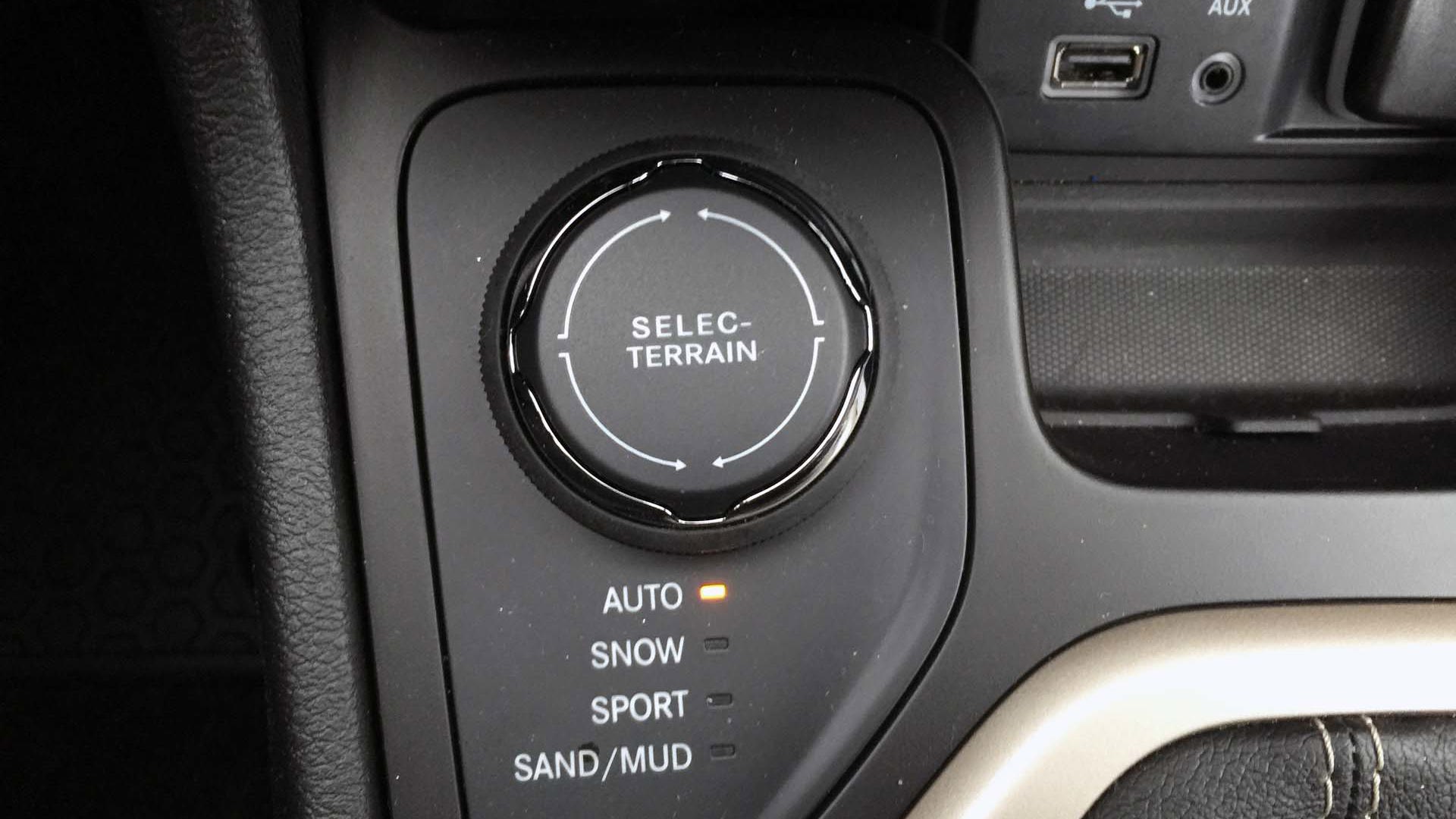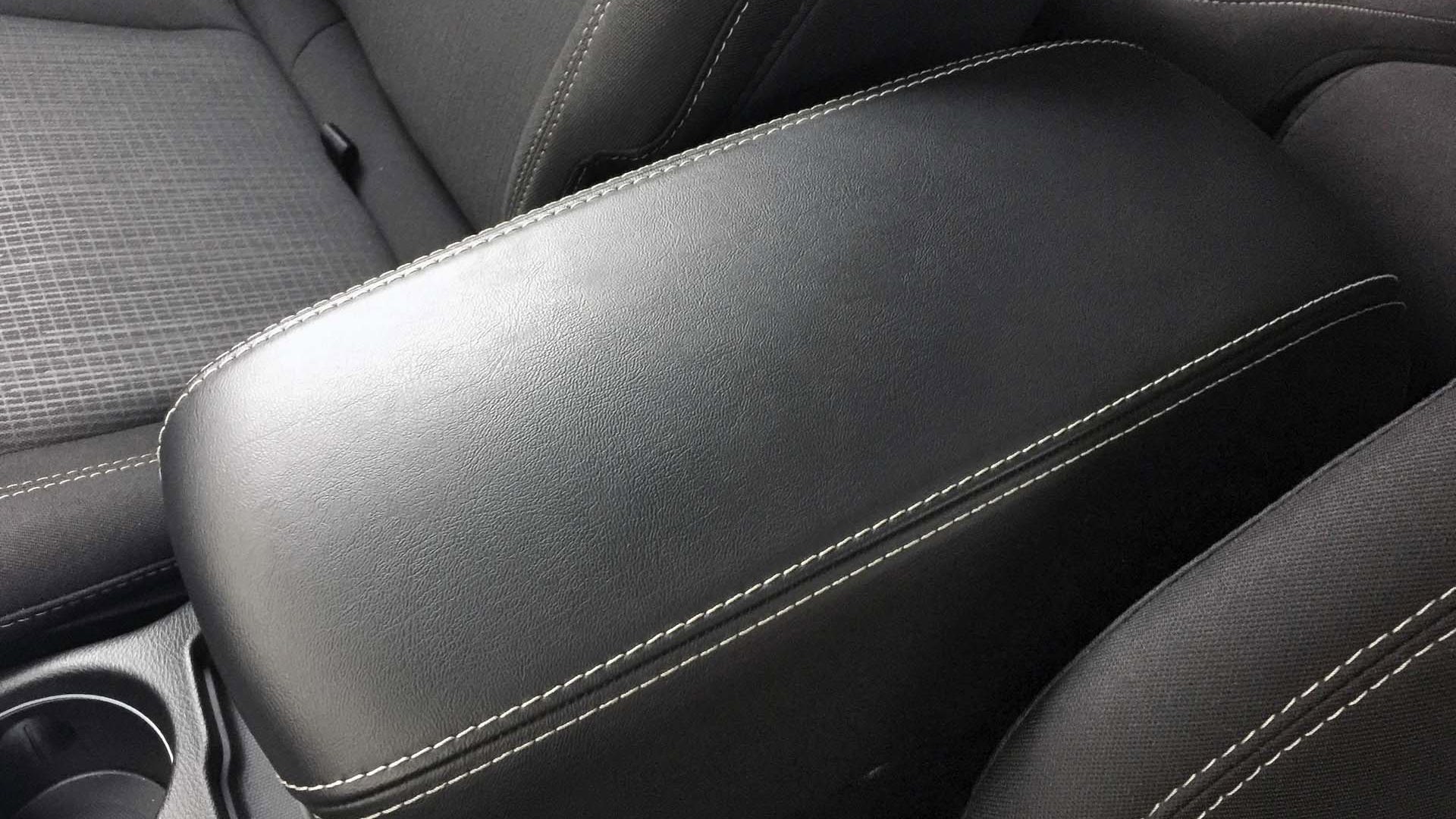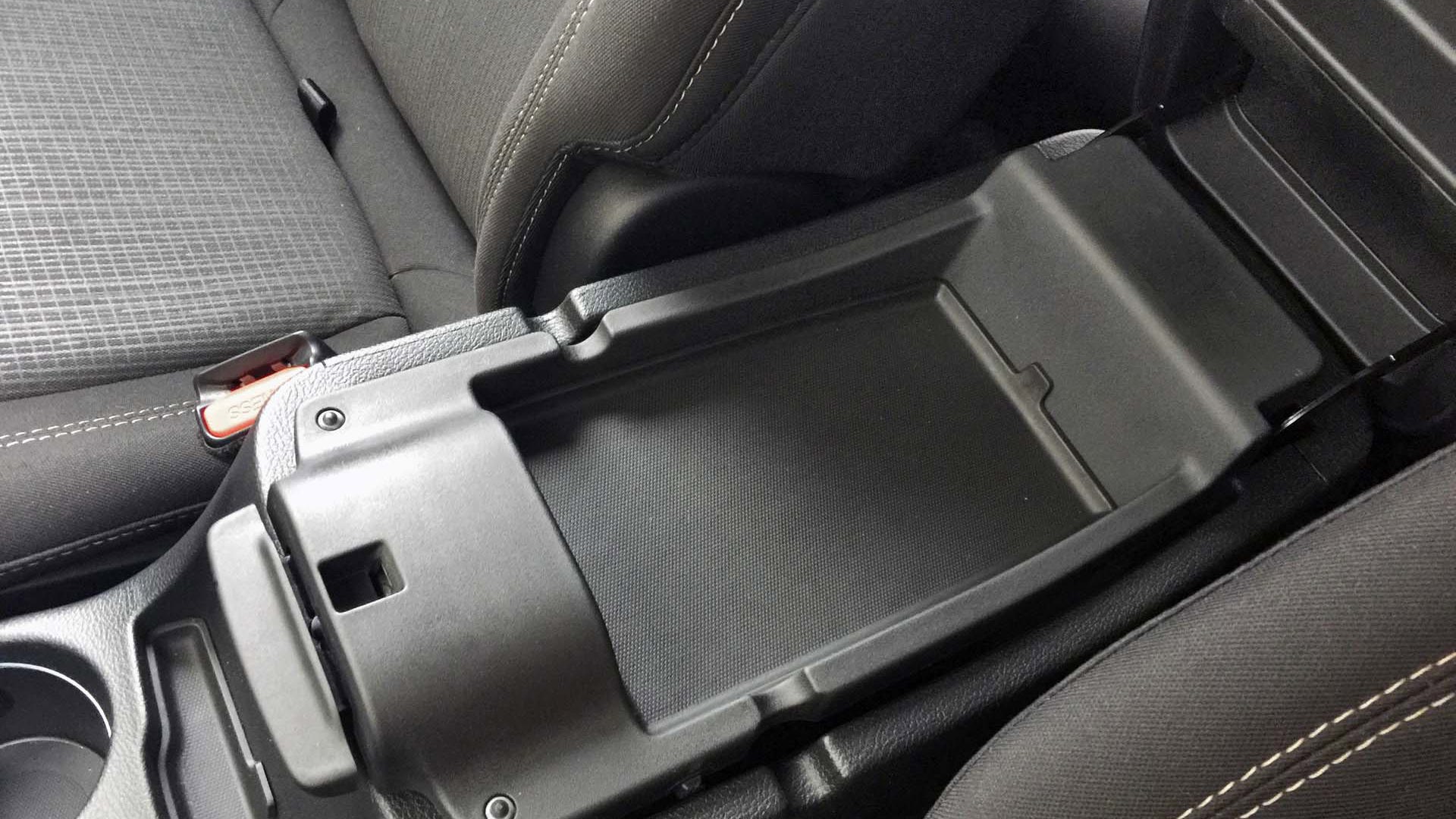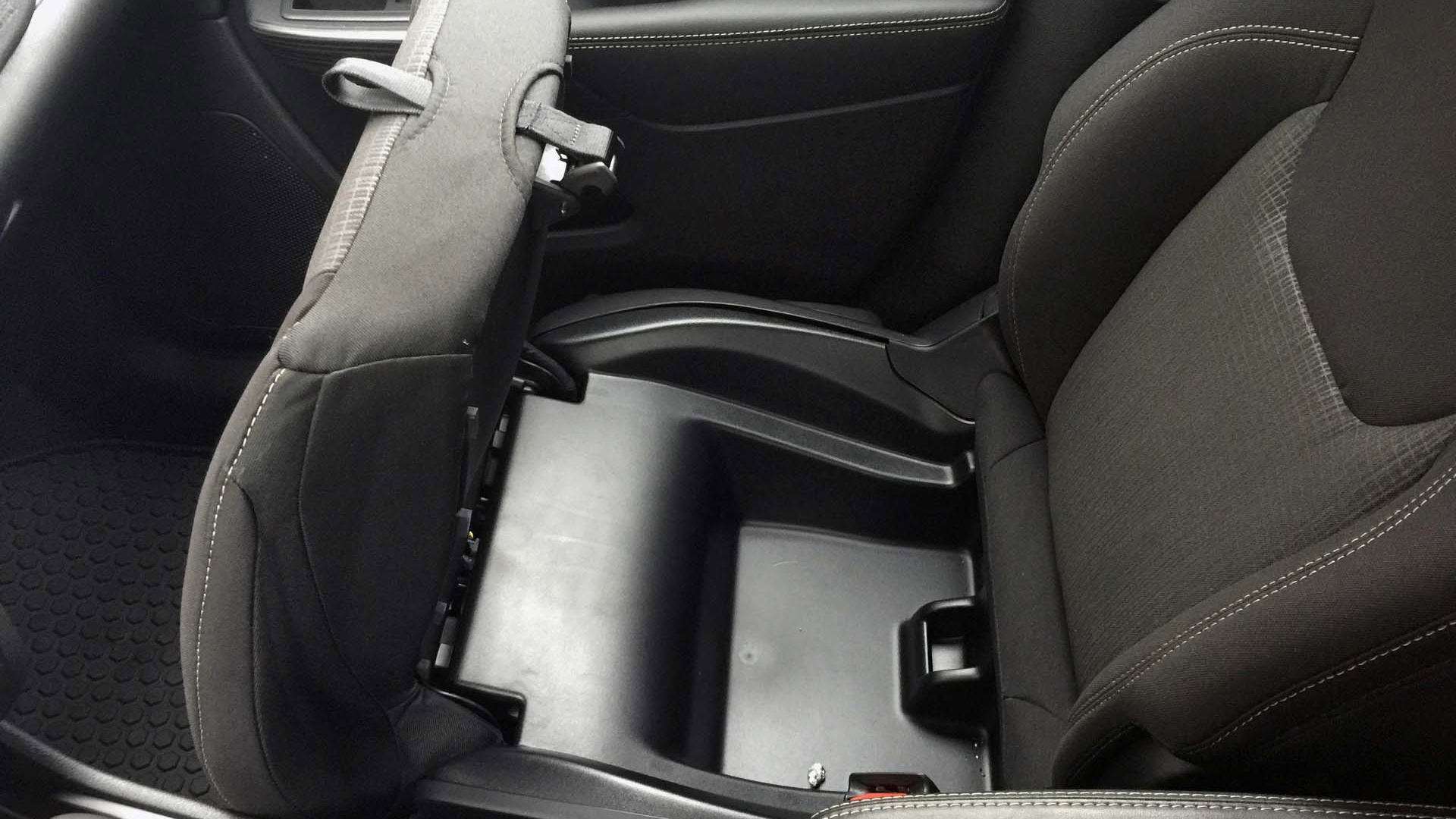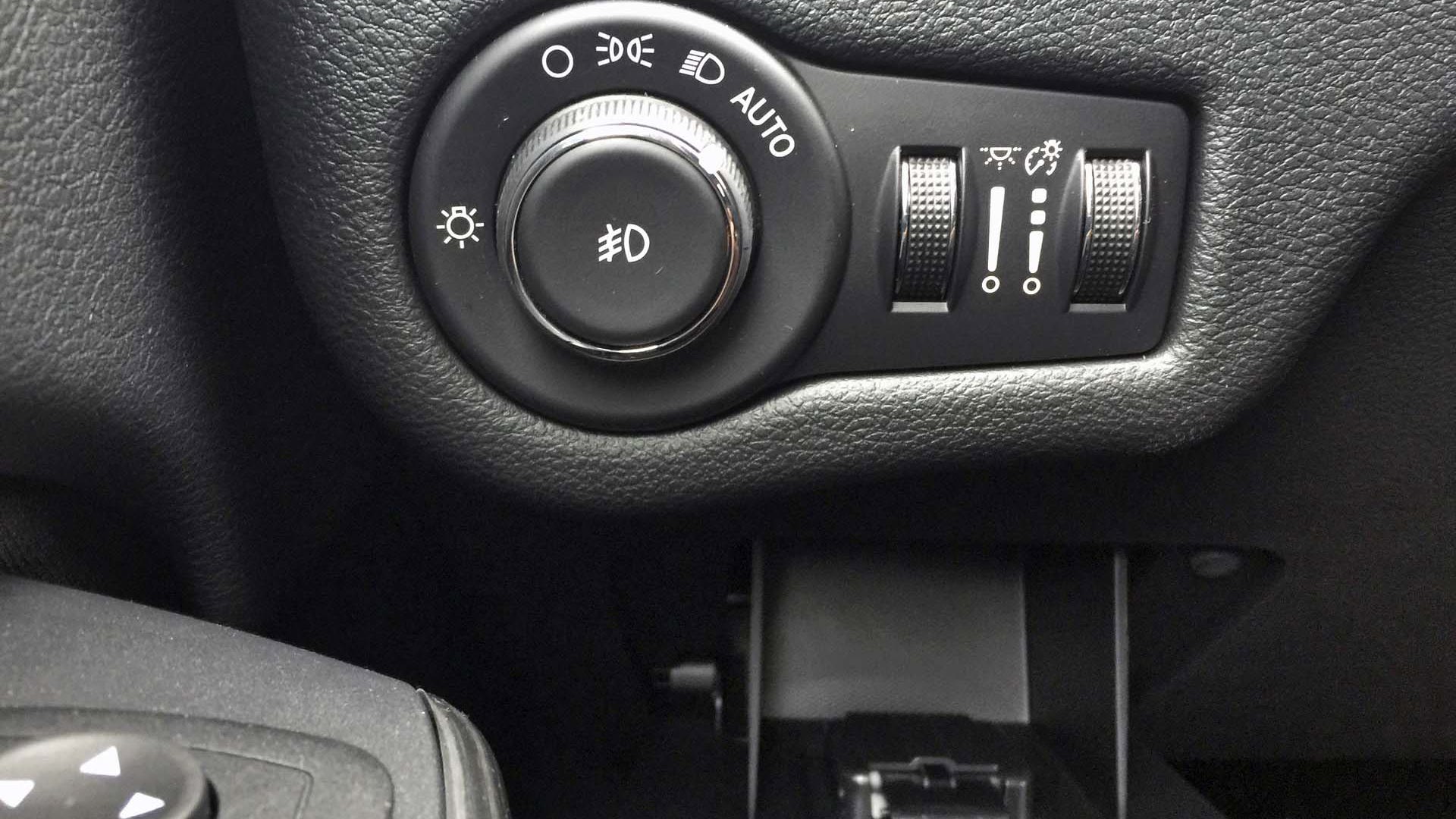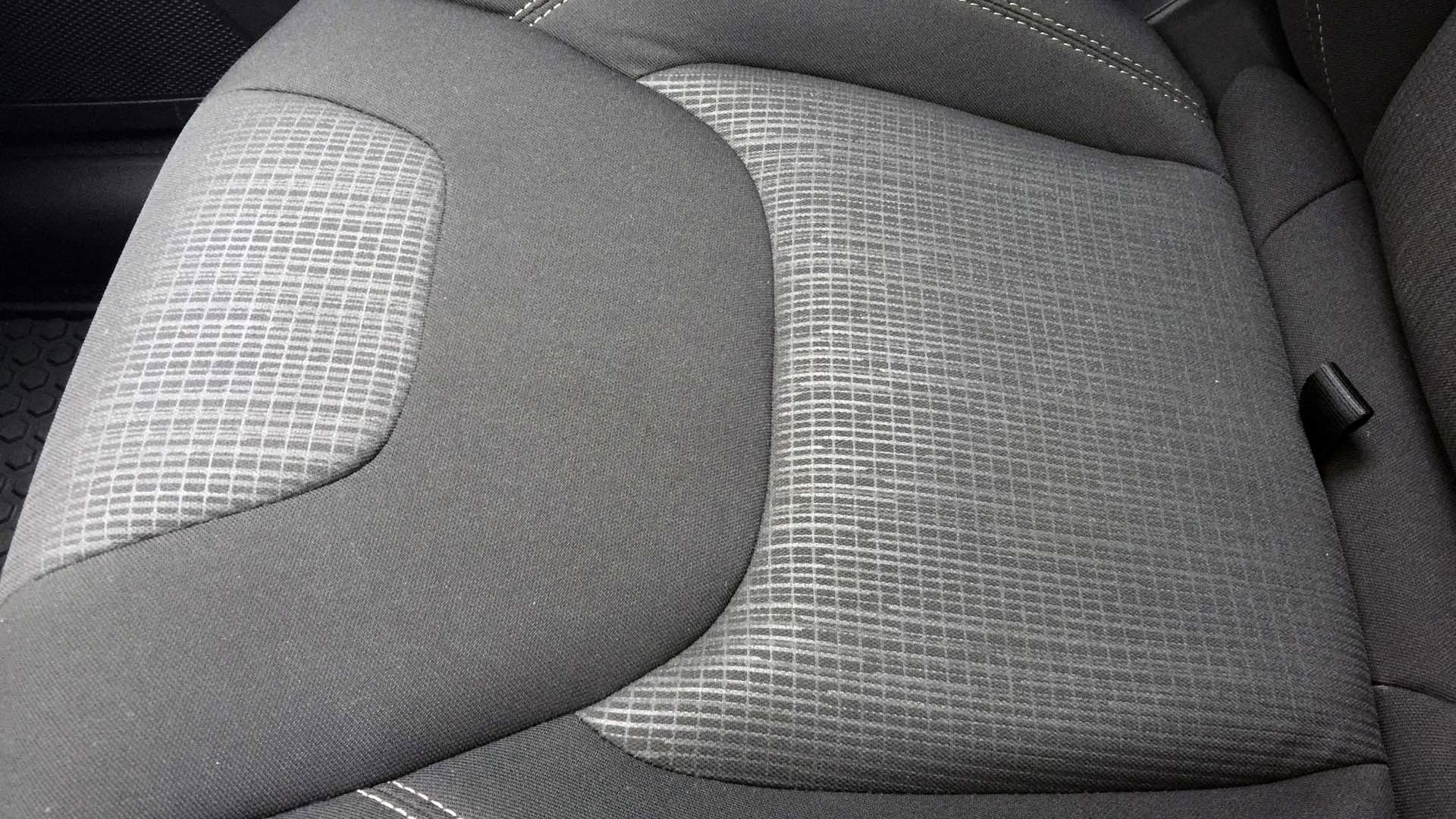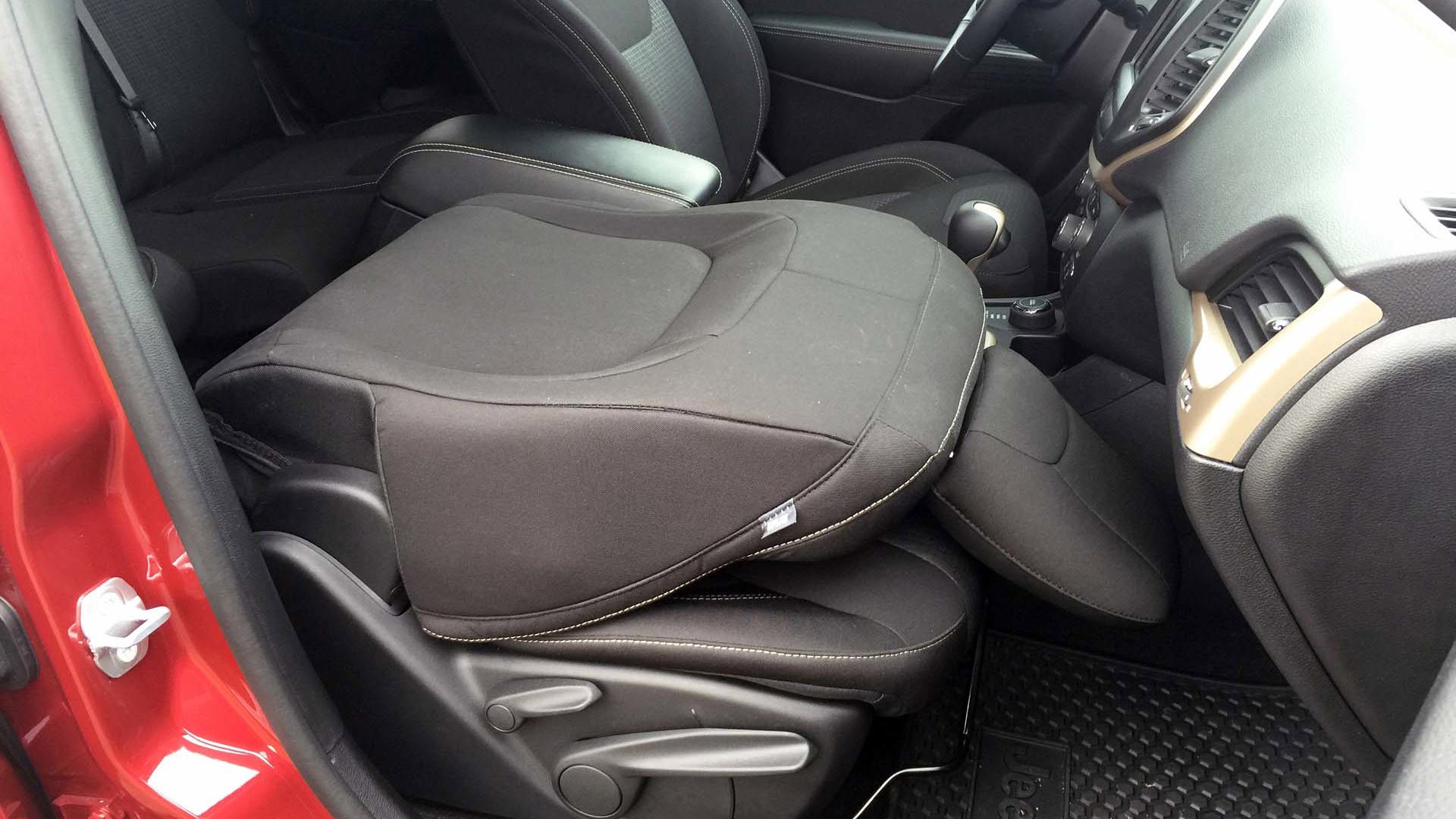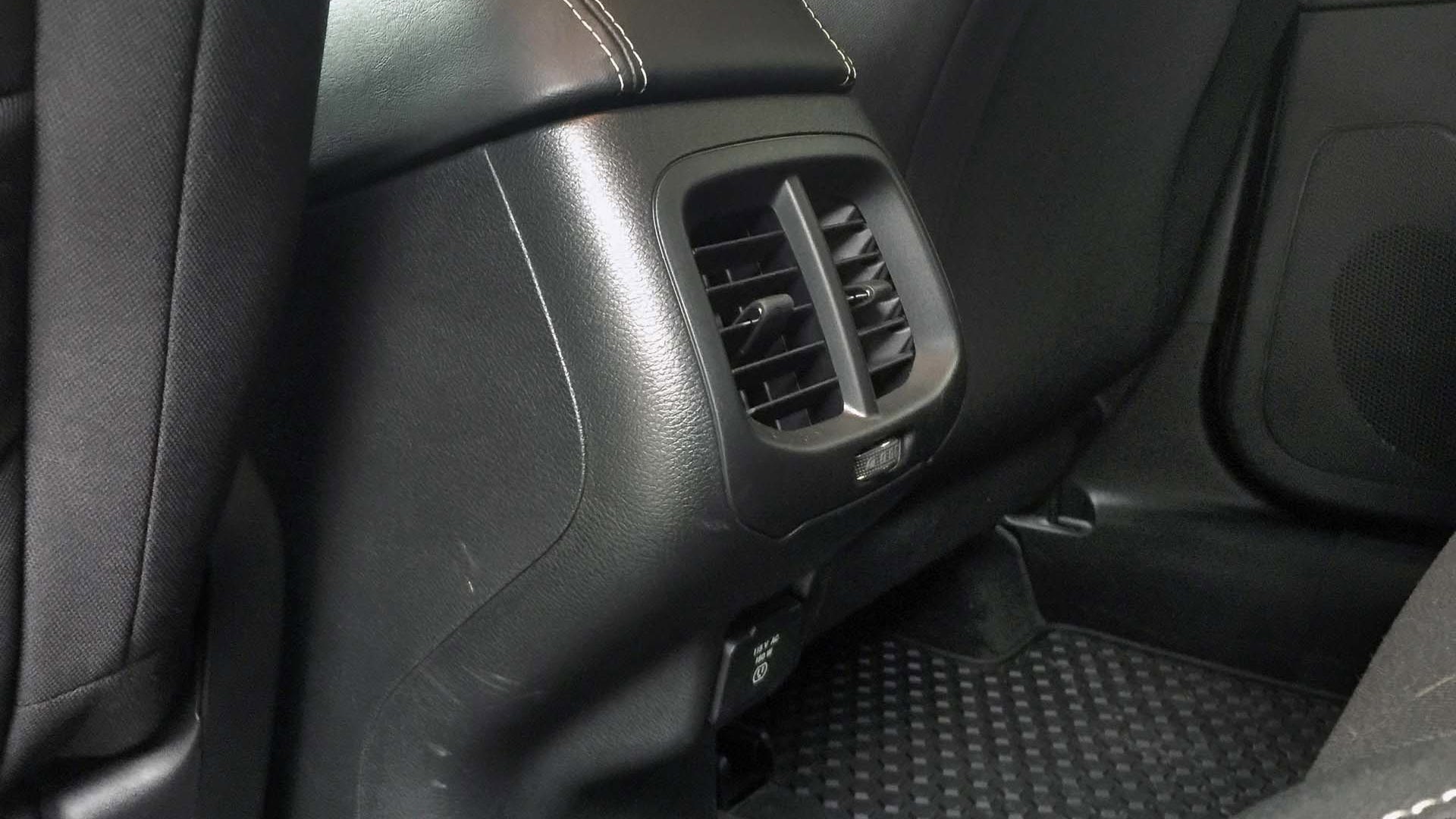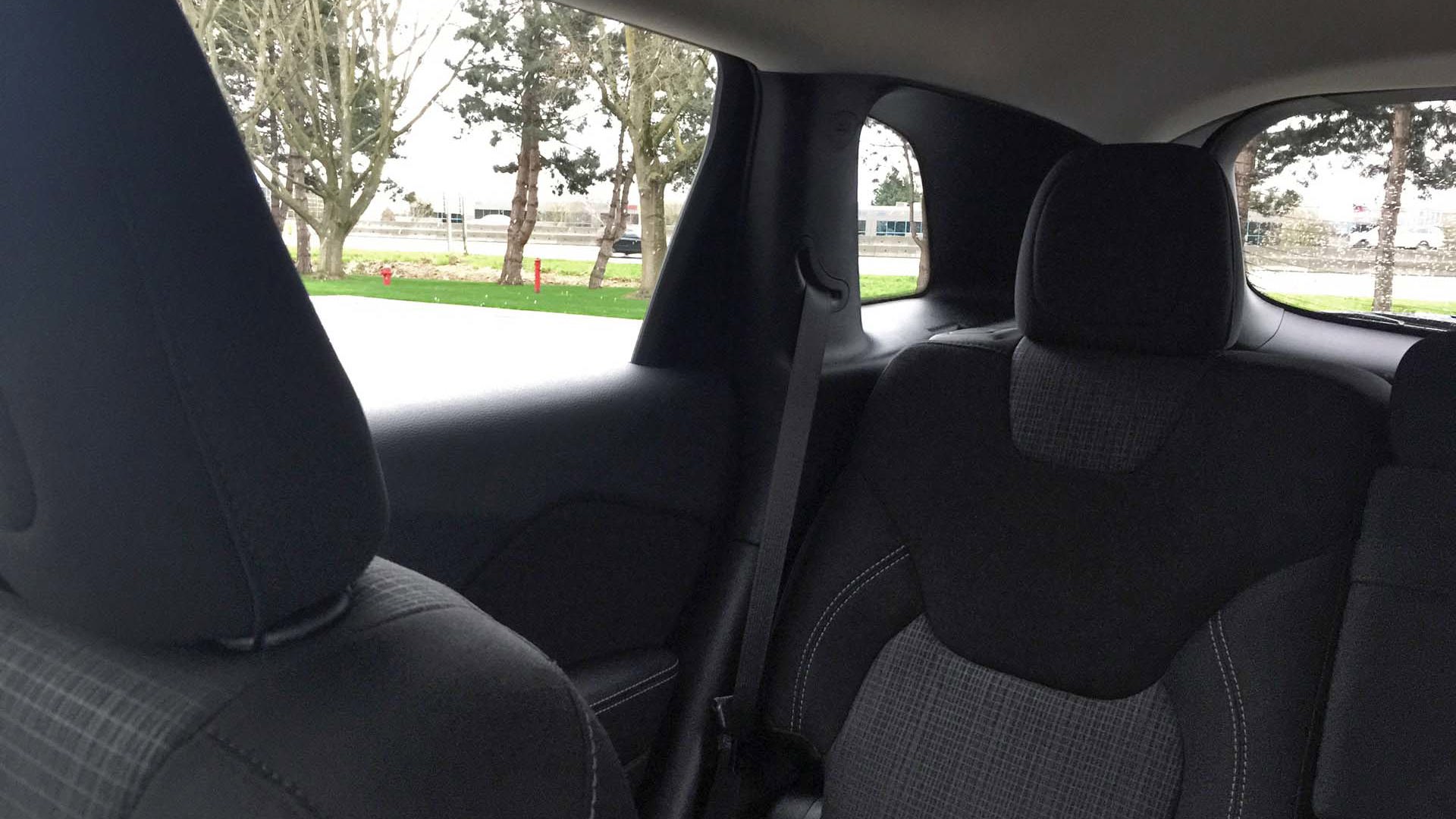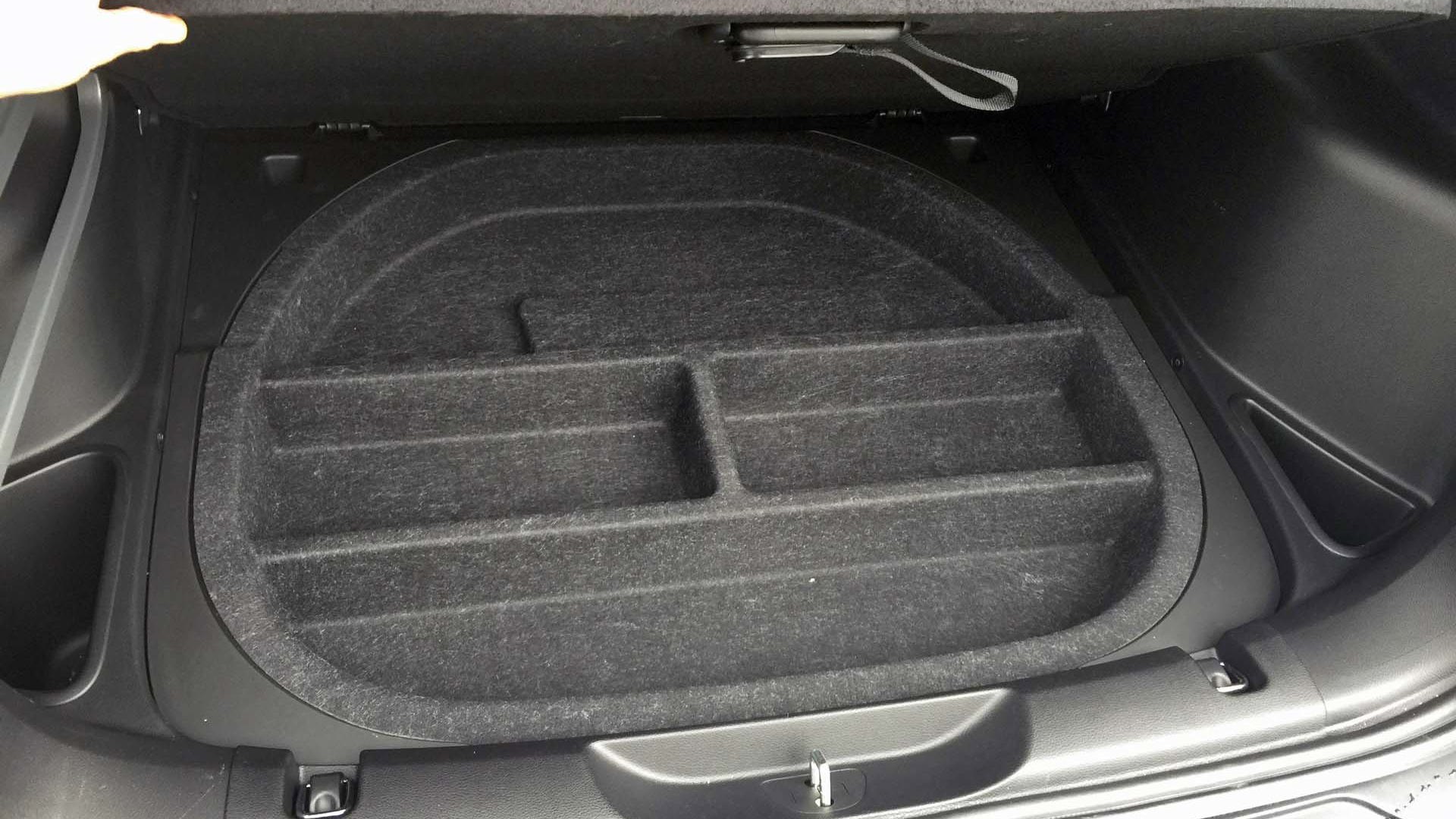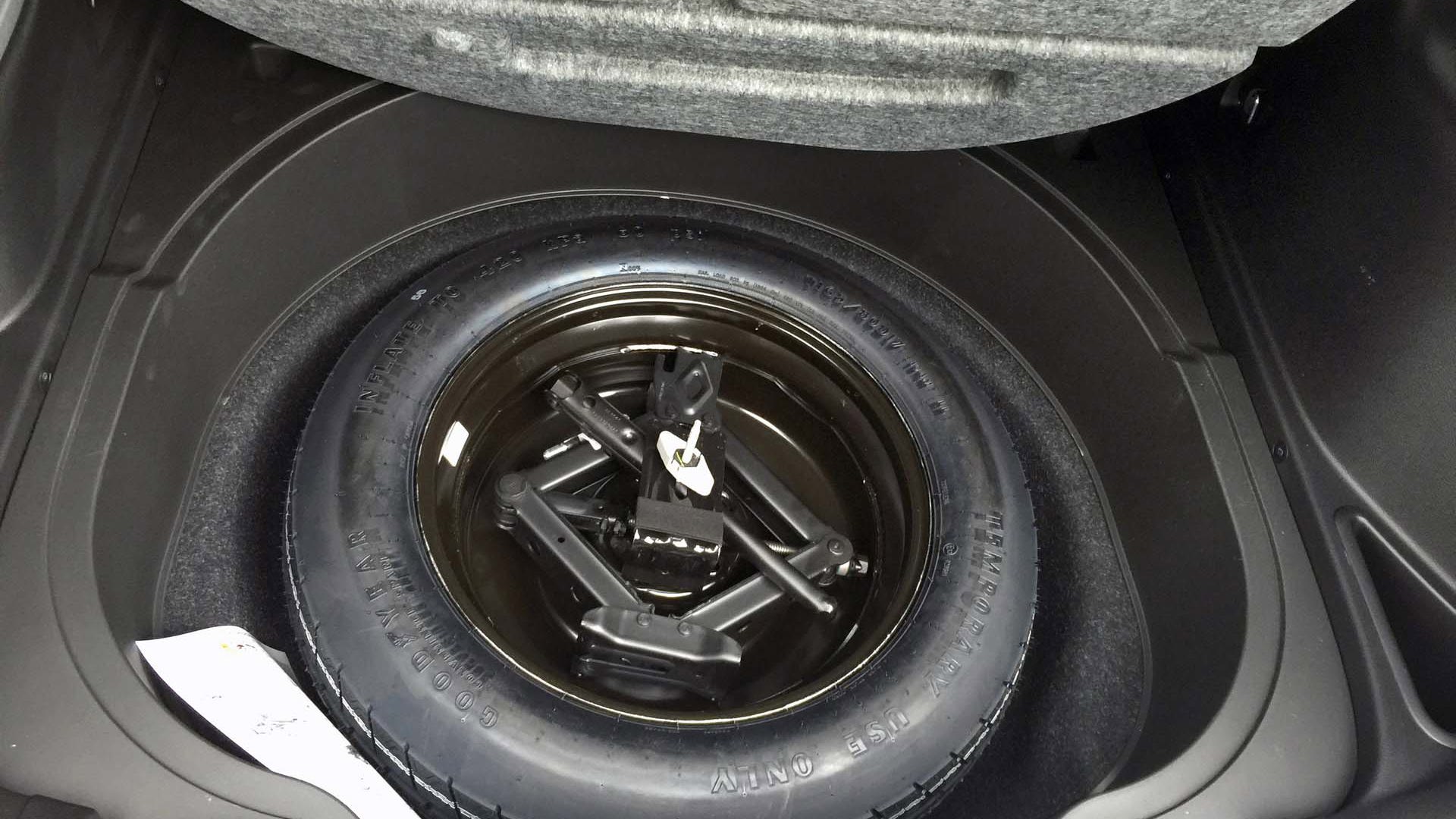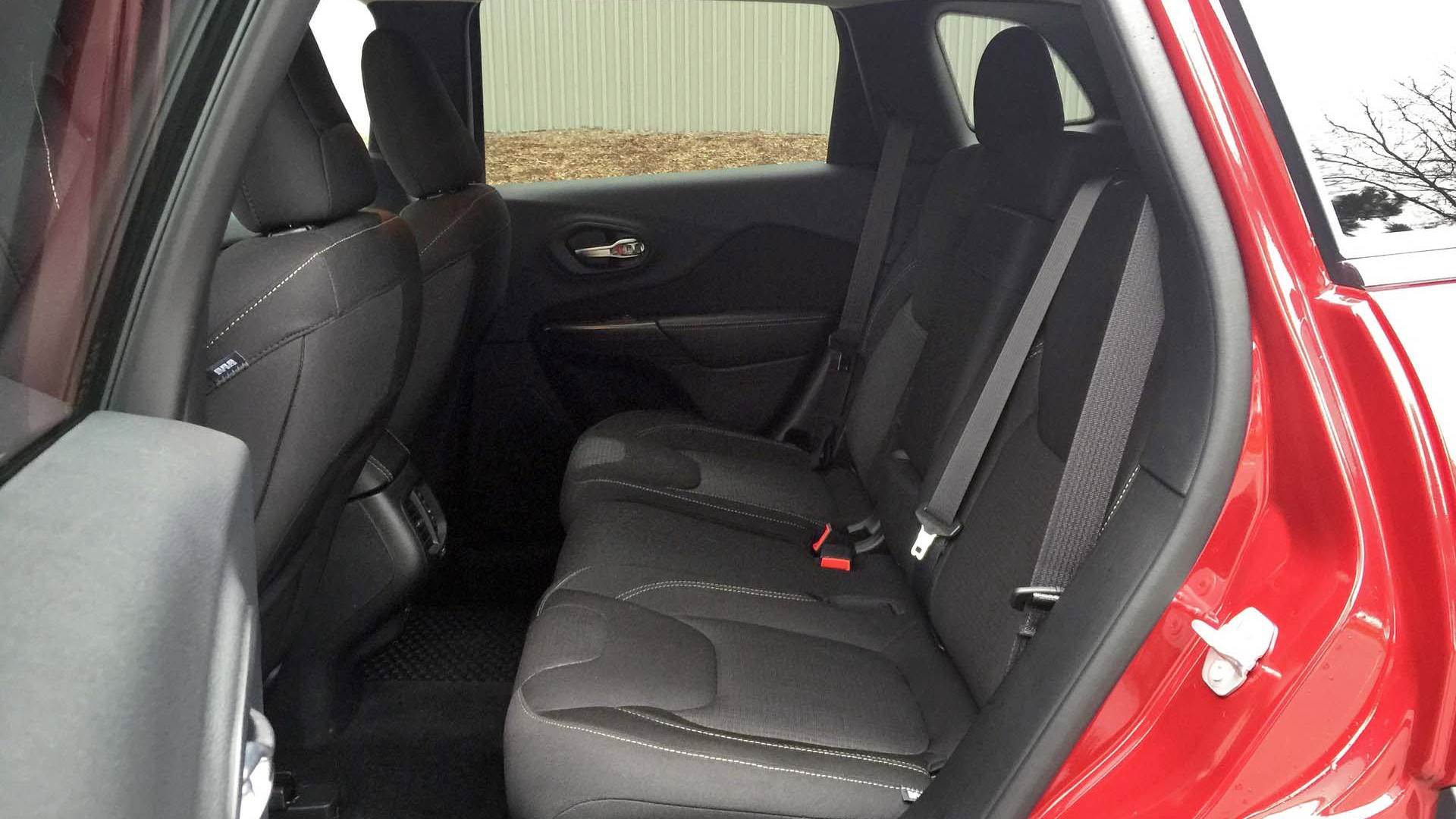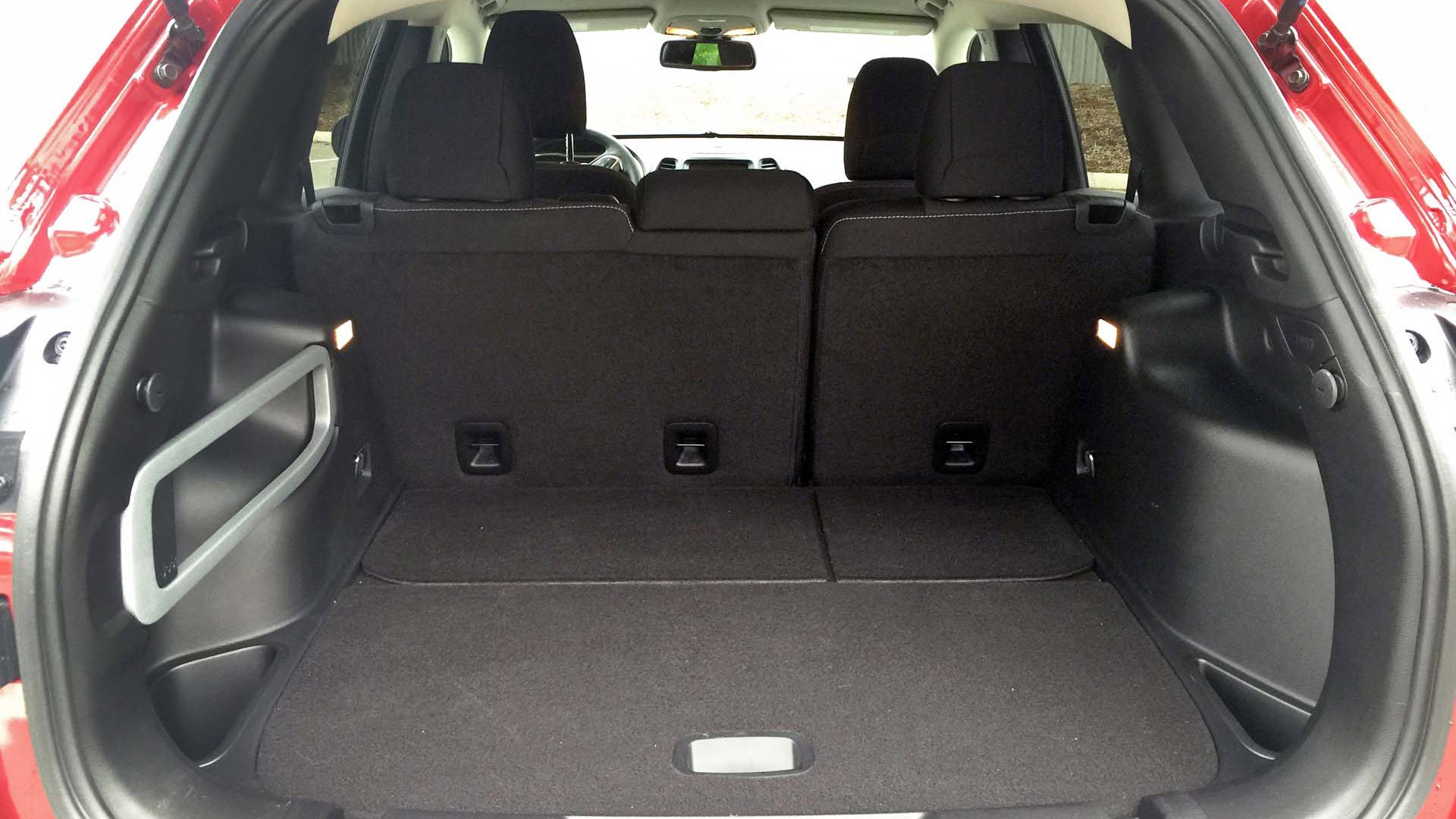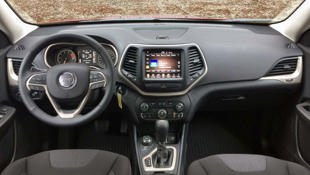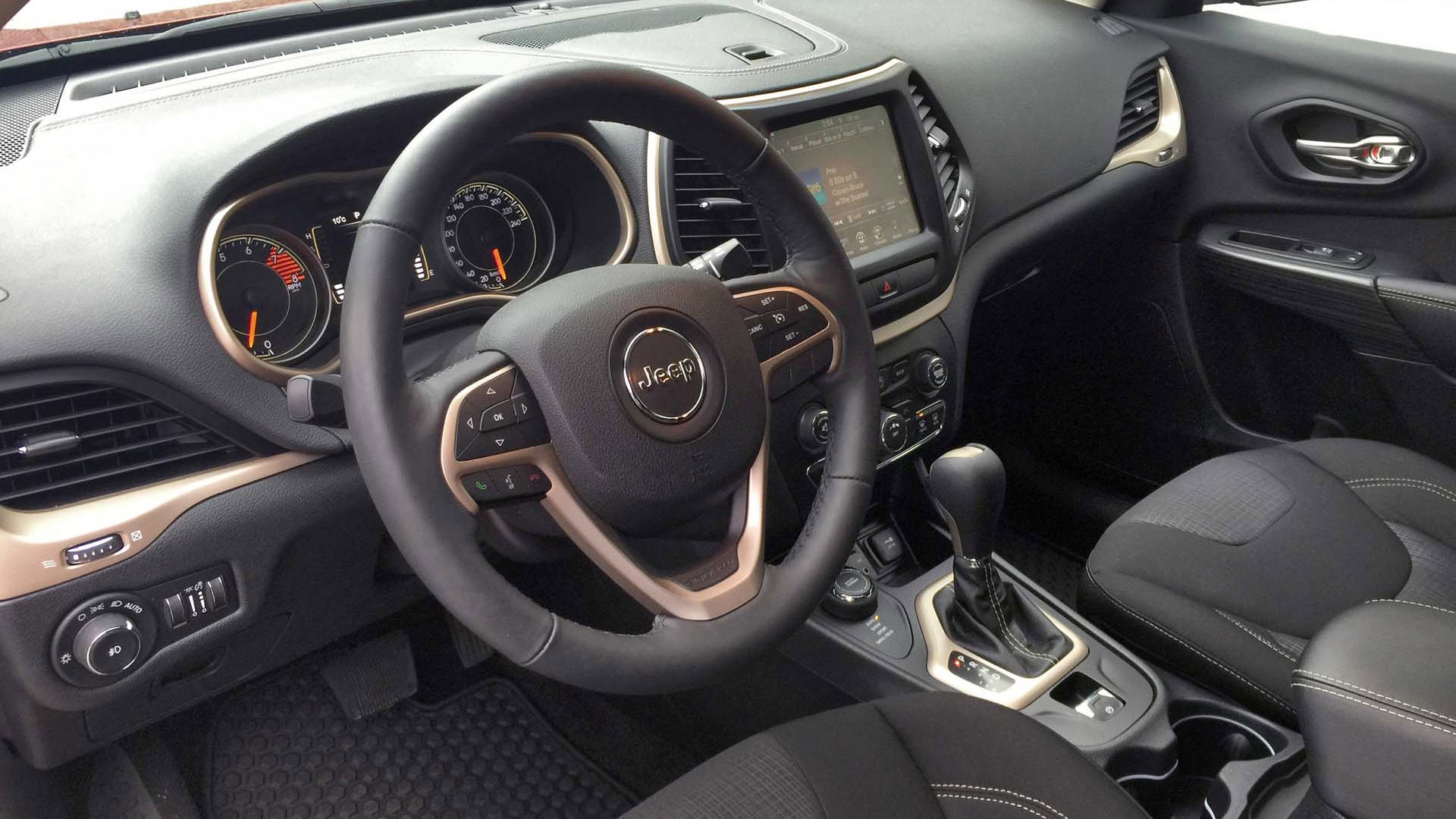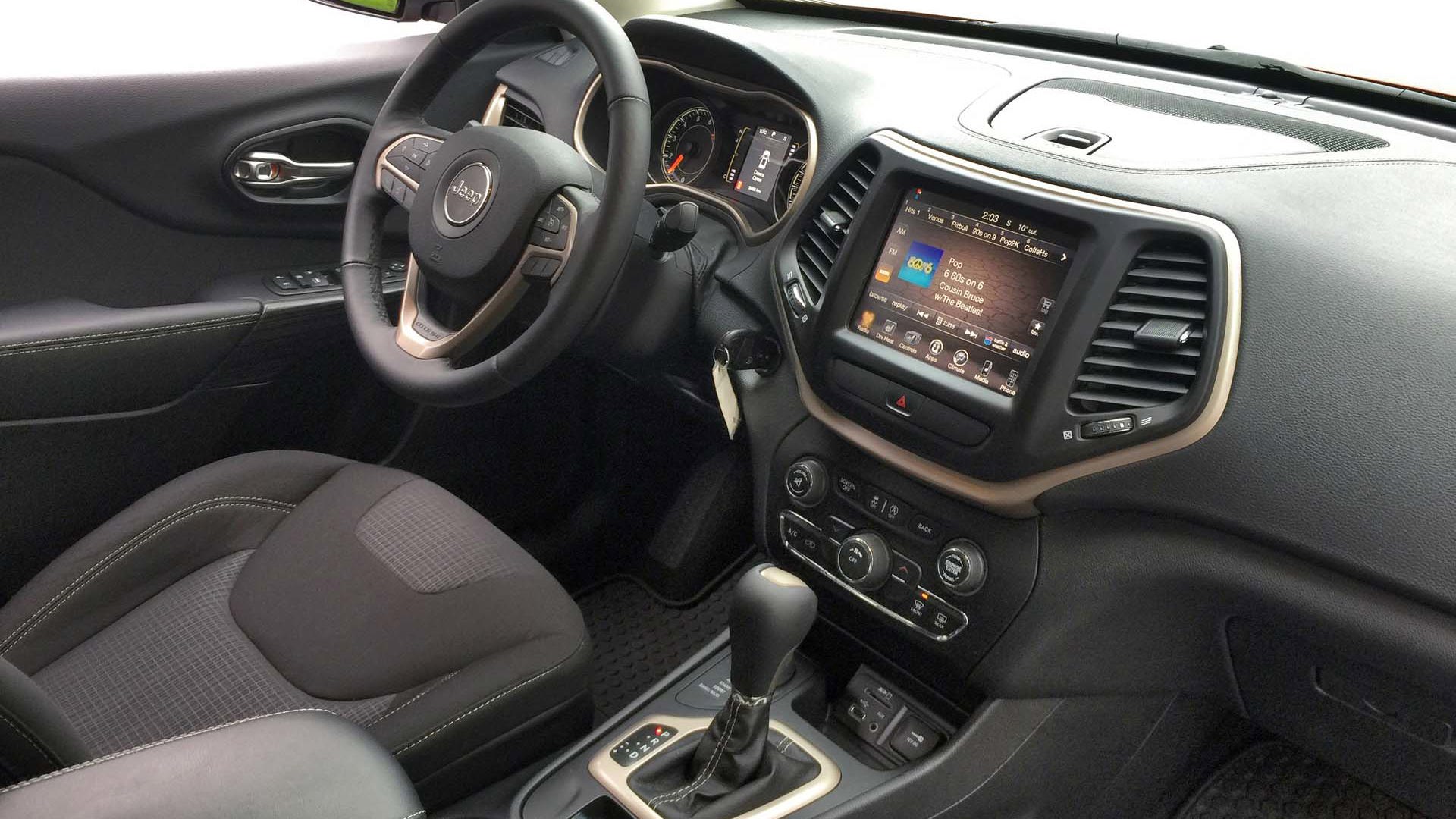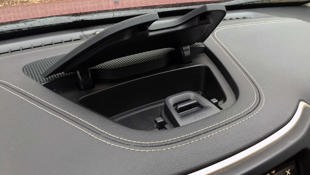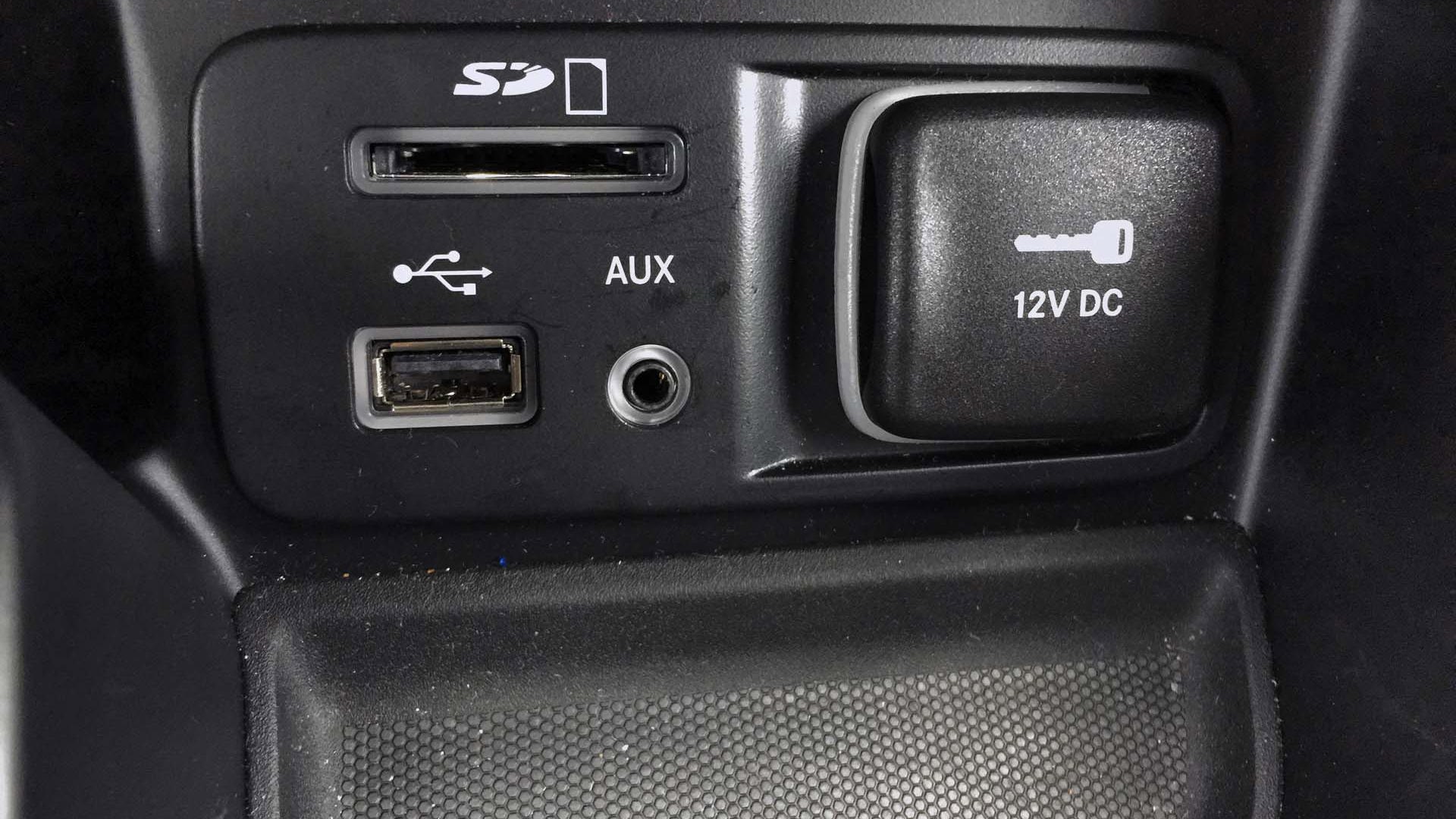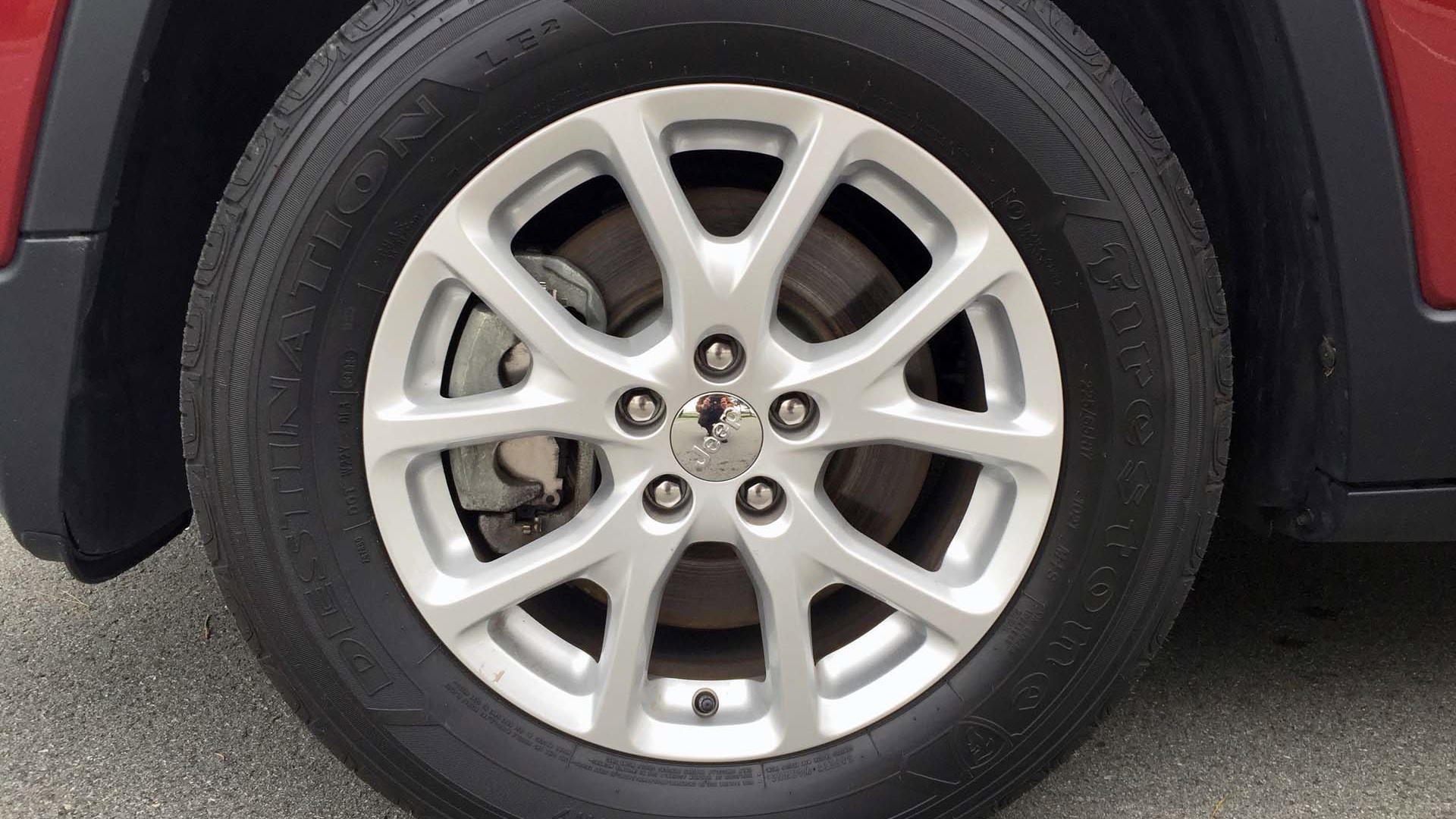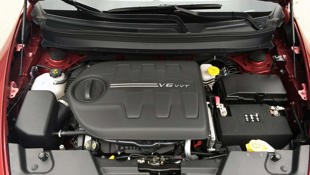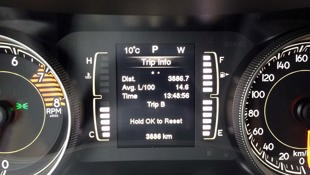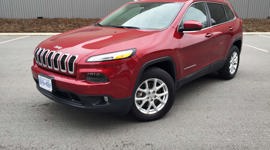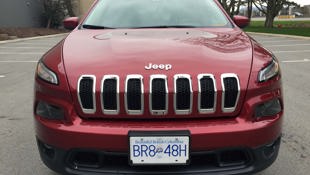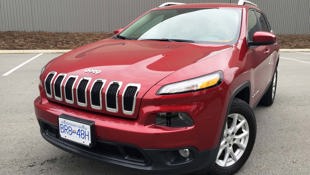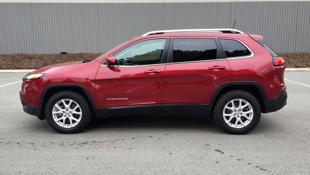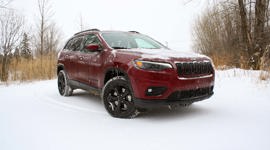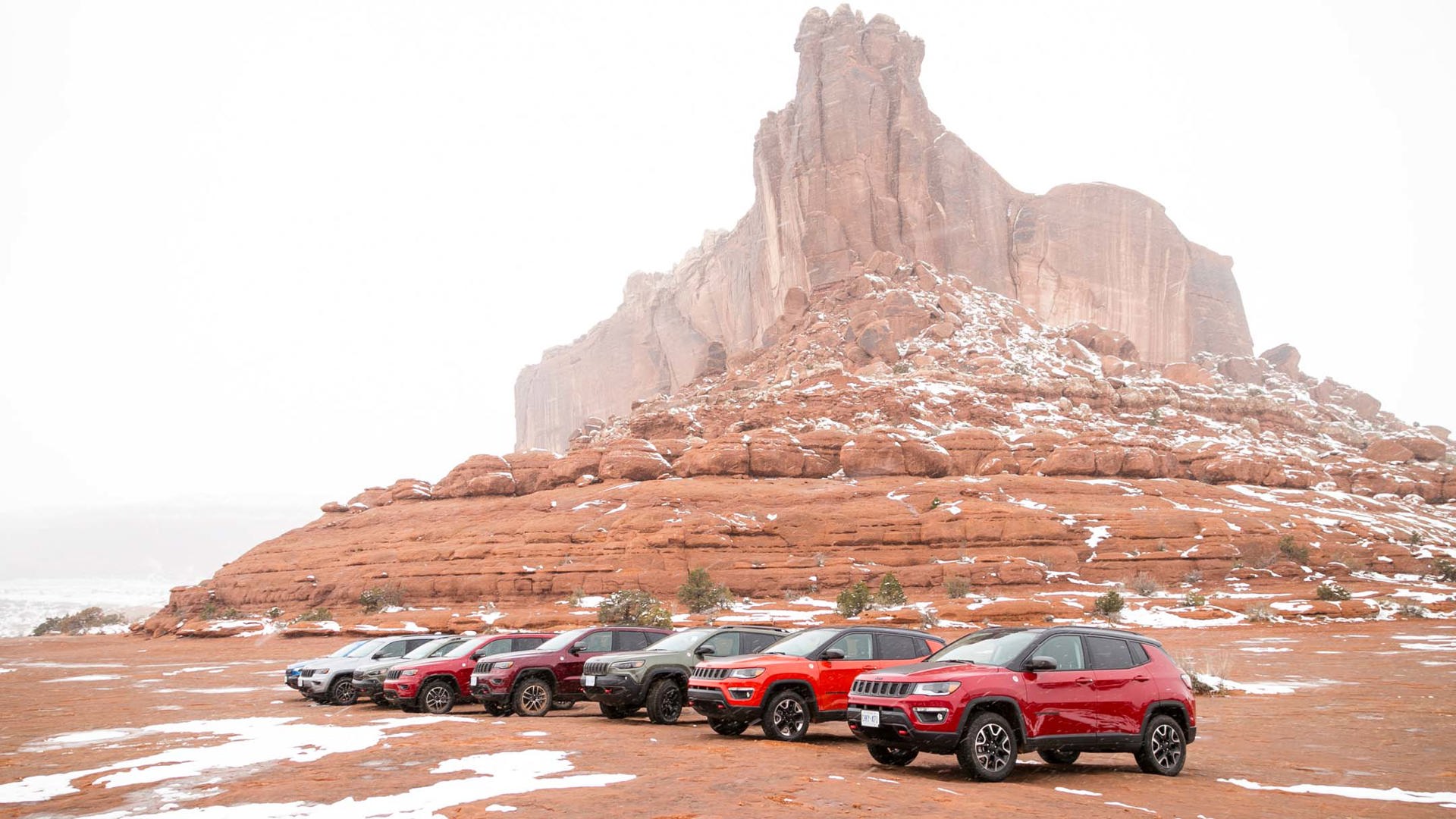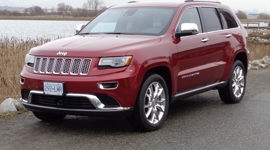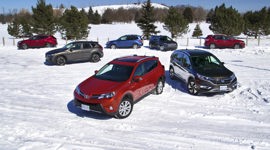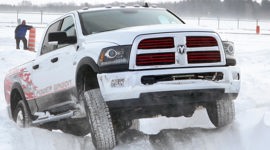 AutoTrader SCORE
AutoTrader SCORE
-
EXTERIOR STYLING5/10
-
INTERIOR8/10
-
PERFORMANCE8/10
-
COMFORT8/10
-
FUEL ECONOMY6/10
It’s been a couple of years since the new Jeep Cherokee made its debut and it remains one of the top-selling SUVs in Canada despite its rather unusual (for a Jeep) front-end styling. In the first three months of 2016, the Jeep Cherokee was the fourth-best selling SUV in Canada behind the Ford Escape (#3), Honda CR-V (#2), and Toyota RAV4 (#1).
Unlike most compact SUVs, the Cherokee is available with an optional V6 engine rather than the increasingly commonplace optional turbocharged four-cylinder.
After a quick check of Jeep’s Canadian website I was disappointed to see that 2016 Cherokee suggested retail prices have gone up significantly. Curiously, at the beginning of the 2016 model year, 2016 Cherokee MSRPs were the same as in 2015 but somewhere between then and now, they rose anywhere from $2,200 to $2,350 by my reckoning. As well, the 2016 Destination charge of $1,795 has increased by $100 from the 2015 charge of $1,695.
Jeep also added two new trim levels for 2016: a mid-level 75th Anniversary Edition and a new top-of-the-line Overland luxury trim.
2016 Jeep Cherokee MSRPs are as follows: Sport (4X2 $26,695; 4X4 $28,895), North (4X2 $30,395, 4X4 $32,595), 75th Anniversary Edition model (4X2 $33,390, 4X4 $35,590), Limited (4X2 $33,895, 4X4 $36,095), Trailhawk (4X4 $34,895), and Overland (4X2 $39,895, 4X4 $45,095).
Higher pricing doesn’t seem to have affected the Cherokee’s appeal. Perhaps that’s because, unlike most compact SUVs, the Cherokee is available with an optional V6 engine rather than the increasingly commonplace optional turbocharged four-cylinder. For many SUV buyers, a smaller-displacement turbocharged engine is no substitute for a normally-aspirated V6 with its linear torque curve, superior engine smoothness and greater towing capability, even if its gas mileage is worse (but not always). The Cherokee’s optional 271-hp 3.2L V6 engine gives the Cherokee a maximum towing capacity of 2,041 kg (4,500 lbs), the best towing capacity in its class. For comparison, the Cherokee’s standard 187 hp 2.4L four-cylinder engine provides a towing capacity of 907 kg (2,000 lbs).
Off-road appeal: 2015 Jeep Cherokee Trailhawk Test Drive
And while most compact SUVs offer front-wheel drive and/or a completely automatic all-wheel drive system, the Cherokee offers standard front-wheel drive and three types of all-wheel drive systems: Active Drive I with Selec Terrain that has driver-selectable settings for different road surfaces, Snow, Sand and Mud as well as Auto and Sport modes; Active Drive II which adds a Low Range gear; and Active Drive Lock 4WD on Trailhawk models which adds a locking rear differential. The Trailhawk, designed for serious off-roading, also gets a lower first gear crawl ratio, Hill Descent Control, off-road suspension, higher ground clearance, underbody skid plates, and front and rear tow hooks.
The 2.4L four-cylinder engine and front-wheel drive are standard in all 2016 Cherokee trim levels except the Trailhawk which has standard four-wheel drive (Active Drive II). Both the four-cylinder engine and the V6 are available with front-wheel drive or four-wheel drive, the latter either Active Drive I or Active Drive II depending on the trim level. A class-exclusive nine-speed automatic transmission is standard in all trims with both engines.
Apart from the price increases for 2016 and trim level additions, changes to the 2016 Cherokee are minimal. The front seats offer improved comfort, the instruments are easier to read, the tilt/telescopic steering wheel is more user-friendly, there’s a new drag-and-drop feature on the touch-screen and you can now use iPhone’s Siri on the infotainment system. And there are two new exterior colours: Rhino Clearcoat and Light Brownstone.
With six trim levels and so many option packages available, base MSRP prices can climb rapidly. Depending what features you need, you can be better off buying a higher trim level rather than starting with a lower trim level and adding options.
Our Deep Cherry Red Cherokee North 4X4 tester has a base price of $32,595. Add to that the optional V6 engine ($1,595) which also includes engine stop-start (at traffic lights), 700-amp battery, 3.25 final drive ratio, and chrome dual exhaust tips; the optional Cold Weather Group ($895) which includes power heated mirrors, windshield wiper de-icer, heated front seats, heated steering wheel, remote start system, and all-season floor mats; a larger Uconnect 8.4-inch touchscreen, Sirius/XM satellite radio, USB port, GPS antenna ($800); rear-view camera ($450); 8-way power driver’s seat with 4-way power lumber ($500); and a Deep Cherry Red Crystal Pearl paint ($225). With these options, our test vehicle came in at $36,460 plus $1,795 Freight charge and a/c tax for a total of $38,955.
Like most compact SUVs, the Cherokee is a utilitarian vehicle that’s big enough to take the kids and their gear to a game but still small enough to manoeuvre in a grocery store parking lot. Though decidedly more aerodynamic than most other Jeeps, the Cherokee hasn’t sacrificed space for style. Its tall cabin provides a roomy, spacious environment with four big doors for easy entry and exit, big windows, and plenty of headroom and legroom. The split rear seats in the Cherokee recline for comfort and can slide forwards individually to increase rear cargo space behind the rear seats. The 60/40 split rear seatbacks fold down separately to maximize passenger and cargo-carrying versatility. As a bonus, the front passenger seatback can fold flat adding at least a metre to the length of the cargo area. The rear hatch lifts up easily to reveal an opening big enough to slide in your next sofa, dresser or major appliance purchase.
The Cherokee North’s interior is attractive and comfortable with a standard black cloth seats with grey seat inserts, leather-wrapped tilt and telescoping steering wheel with integral audio, telephone and cruise controls, and bright, easy-to-read instruments and 3.5-inch information display behind the steering wheel. A 5-inch centre touchscreen is standard but our tester had the optional 8.4-inch touchscreen ($800) which comes with a new Drag and Drop feature that allows you to drag your favourite apps to the main menu bar. You can also now use Apple’s voice-activated Siri information advisor and turn on a Do Not Disturb feature while driving which redirects calls to voicemail or sends an automatic text reply.
Our test vehicle also had the optional eight-way power driver’s seat with four-way power lumbar adjustment ($500) as well as front seat heaters and a heated steering wheel - the latter two are most welcome on a cold winter morning. The trouble is, once you’ve tried them, you really don’t want to go back to anything else! The only downside I found to the seat and steering wheel heaters is that you have to use the on-screen buttons to turn them on and off.
Driver and passengers sit up tall in the Cherokee with good visibility to the front, sides and rear although the right-side C and D pillars do obstruct visibility when lane-changing. An optional back-up camera is available in all trim levels (standard in Limited) while rear parking sensors, a blind-spot and rear cross-traffic warning system are available in North and above trim levels as part of the SafetyTec option package ($895).
The driver’s seat is very comfortable with power height, recline and lumbar features, while the front passenger seat has a manual height adjuster. I did appreciate the Cherokee’s high centre padded armrest and padded door armrests which helps take the weight off your arms on long drives.
Between the gauges is a bright 3.5-inch information display that provides useful information such as average and current fuel economy, radio station, outside temperature, compass and digital speedometer. It’s operated by pushing the arrow buttons on the left steering wheel spoke.
The optional 8.4-inch touchscreen in the centre of the dash is one of the largest screens available in any vehicle. Its large ‘tiles’ are easy to see and touch to navigate through various menus for audio, telephone, climate control, navigation and vehicle settings. Most audio controls are operated on the touch-screen but standard dials for frequently-used Volume and Tune functions are located just below the touchscreen. As well, there are hard buttons and dials for air conditioning, temperature and fan speed.
Storage areas abound in the Cherokee: a bi-level bin between the front seats includes USB port and 12-volt charger; an open cubby under the heater controls has USB, auxiliary, 12-volt and SD card ports; and a bin near the driver’s door can be used for coins. There’s also a covered bin on top of the dash, a magazine pocket on the console for the front passenger, door pockets, glovebox, and a unique hidden bin underneath the front passenger seat. For rear passengers there’s a fold-down centre armrest with two cupholders, map pocket on the back of the driver’s seat, and a 115-volt outlet on the back of the centre tunnel.
The Cherokee has 10 airbags, including knee airbags for the driver and front passenger.
The rear hatch opening is large but the liftover height is quite high. The cargo area has a carpeted floor and carpeted seatbacks but the wheelwells are bare plastic. On the left side, an open bin and metal support bar can prevent items from rolling around the trunk while a smaller bin on the left will accommodate smaller items. Under the floor is a hidden, compartmentalized storage area.
Over the week that I drove the V6-equipped Cherokee, I found its performance to be powerful, smooth and quiet. Equipped with the 271 hp V6 engine, the 2016 Jeep Cherokee can zip from 0 to 100 km/h in just 8.2 seconds, according to AJAC. That’s quicker than four-cylinder competitors such as the Honda CR-V (9.4 sec.), Toyota RAV4 (9.9 sec), and Nissan Rogue (10.7 sec) but not quite as quick as the turbocharged 2.0L four-cylinder Ford Escape (7.8 sec) or the turbocharged four-cylinder Subaru Forester (7.4 sec). Keep in mind though, the Cherokee V6 has a higher towing capacity, no ‘turbo lag’ and arguably smoother acceleration.
Of course, with more cylinders the Cherokee V6 4X4 isn’t as fuel efficient as its four-cylinder AWD competitors. Surprisingly though, it’s not much thirstier than the four-cylinder Cherokee: the Cherokee V6 4X4 has an NRCan rating of 11.6 city/8.5 hwy/10.2 combined while the four-cylinder Jeep Cherokee 4X4 offers 11.3/8.3/10.0. The real fuel misers are the Cherokee’s less powerful four-cylinder AWD competitors: Honda CR-V (9.5/7.5/8.6), Nissan Rogue (9.5/7.4/8.6), Subaru Forester (9.6/7.5/8.7) Toyota RAV4 (10.5/8.2/9.5), and Ford Escape 1.6T (10.5/7.9/9.4). The Cherokee’s powerful turbocharged four-cylinder competitors offer about the same level of fuel efficiency: eg. Ford Escape 2.0T (11.4/8.4/10.0), and Subaru Forester 2.0T (10.2/8.5/9.4). Here is a graph showing the fuel economy comparison.
Fuel efficiency of the Cherokee’s V6 engine is enhanced by a standard stop/start system that automatically turns off the engine while waiting at stop lights and restarts it as the brake pedal is released. In the driver’s seat, the transition is noticeable but it’s smooth enough that it doesn’t detract from the driving experience.
Another fuel-saving feature is the Cherokee’s standard nine-speed automatic transmission. With more gears to choose from, the transmission can shift into higher gears sooner where engine revs are lower and less fuel is used. On a level highway, the V6 engine turns over just 1,900 rpm at 100 km/h in 9th gear contributing to better highway mileage.
Despite all this, the best average fuel consumption that I could attain during my week with the Cherokee V6 was 13.5 L/100 km, according to the onboard fuel economy display - considerably more than its 10.2 L/100 km Combined rating. At least the V6 uses Regular gasoline rather than more expensive Premium grade.
The Cherokee’s standard Active Drive I includes the driver-selectable Selec Terrain all-wheel drive settings for different road surfaces. A large round dial near the shift lever makes it easy to select one of the five choices: Auto, Snow, Sport, Sand, or Mud. Active Drive 1 is an on-demand all-wheel drive system that defaults to front-wheel drive and actually disconnects itself from the rear axle for maximum fuel efficiency. It automatically engages all-wheel drive when sensors detect slippery conditions. Selecting Snow, Sand or Mud automatically activates sensors that customize the powertrain and stability systems to maximize traction. The Sport setting provides quicker throttle response and delayed shifts for faster acceleration. However, for everyday commuting in most types of weather, the Auto setting is all you really need for the best balance of performance, fuel economy, stability and traction.
2016 Cherokees are also available with Active Drive II which includes low range gears for climbing or descending steep hills or traversing difficult terrain. Active Drive II also adds an extra inch of ground clearance. Active Drive Lock, standard on Trailhawk models, adds a rear differential lock which Jeep says is useful for “severe” off-road conditions.
In typical urban and suburban driving, the Cherokee provides a comfortable and quiet ride and handles well considering its high 222 mm ground clearance. The Cherokee includes standard 225/65R17-inch all-season tires, four-wheel disc brakes, all-speed traction control, electronic roll mitigation, trailer sway control and electronic stability control.
If you can get past the Cherokee’s controversial styling and you’re willing sacrifice some fuel economy for a little muscle, the V6-equipped Cherokee has a lot to recommend it. However, the starting price can really start to build when you add options and option packages - of which there are many.
2016 Jeep Cherokees are built in Toledo, Ohio.
| Warranty: 3 years/60,000 km; 5 years/100,000 km powertrain; 3 years/unlimited distance corrosion perforation; 5 years/100,000 km roadside assistance Competitors: |
| Model Tested | 2016 Jeep Cherokee North 4X4 V6 |
|---|---|
| Base Price | $32,595 |
| A/C Tax | $100 |
| Destination Fee | $1,795 |
| Price as Tested | $38,955 |
|
Optional Equipment
$4,465 (3.6-litre V6 w/engine stop-start, 700-amp battery, 3.25 final drive ratio, chrome dual exhaust tips $1,595; 8-way power driver’s seat with 4-way power lumber $500; Uconnect 8.4-inch touch-screen, Sirius/XM satellite radio, USB port, GPS antenna, navigation-ready $800; Cold Weather Group: power heated mirrors, windshield wiper de-icer, heated front seats, heated steering wheel, remote start system, all-season floor mats, leather-wrapped shift knob $895; rear-view camera $450; Deep Cherry Red Crystal Pearl paint $225)
|
|
